Latvia / Latvijas Republika – Let’s explore here
What’s it like in Latvia?
Ah, the land of storks and impatient drivers! Latvia is a small, very low lying country in the Baltic region in the east of Europe. Most of the country is less than 350 ft (107 m) above sea level, and there are lots of managed woodlands, natural forests, lakes and wetlands. The highest point is Gaiziņkalns, just east of the centre, at 1,024 ft (312m) above sea level.

The Latvian people
The population is approaching two million people (2022), with ⅔ being Latvians and about ¼ being ethnic Russians. The capital city is beautiful Riga, a UNESCO World Heritage Site, and its neighbours are Estonia, Belarus, Russia and Lithuania.
We’ve definitely learned a lot about the intriguing country, and met a lot of different people. In our view it’s a very economically divided country, and although clearly a lot of people are making money – judging by some of the flashy cars and houses – a lot appear to live in a great deal of poverty.
It also operates a digital nomad via scheme, which you may find of interest. Oh, and did I mention there were storks, like … everywhere!
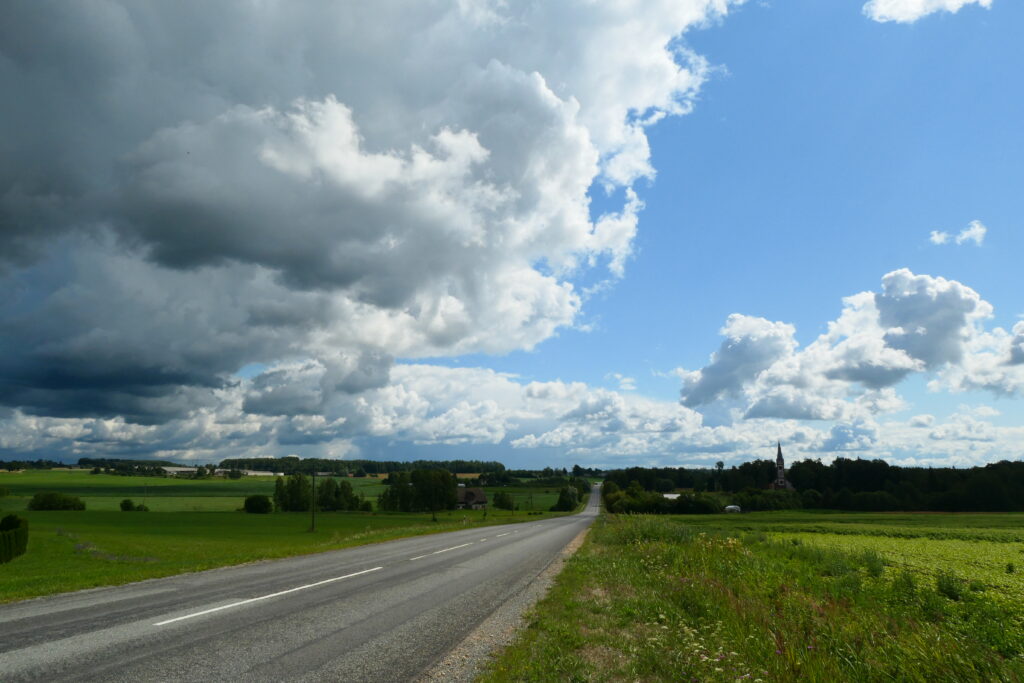
A bit about the history of Latvia
Early History and Medieval Period
Latvia has a history that dates back to ancient times. The territory was originally inhabited by various Baltic tribes, such as the Latgalians, Curonians, and Semigallians. In the 12th century, the region saw the arrival of Germanic crusaders, who began to colonise and Christianize the Baltic peoples. The establishment of the Livonian Order in the 13th century marked the beginning of foreign rule in the region, with much of Latvia falling under control of the German-speaking nobility.
Rule by Poland and Sweden
In the 16th and 17th centuries, Latvia experienced periods of control by both Poland and Sweden. The region was part of the Polish–Lithuanian Commonwealth until the early 17th century, when Sweden began to exert its influence, particularly in the areas that are now northern Latvia. Swedish rule introduced significant reforms and made the region an important part of the Swedish Empire.
Russian Empire Control
In the early 18th century, after the Great Northern War, Latvia came under the control of the Russian Empire. Latvia was divided into two main provinces, Livonia and Kurzeme, which were governed by the Russian tsars. The region became increasingly integrated into the Russian Empire, and the Latvian population saw both economic growth and the imposition of Russian authority. Over time, tensions grew as Latvians sought greater autonomy, but they were largely suppressed under Russian rule.
Struggle for Independence and the Interwar Period
During the upheavals of World War I and the Russian Revolution, Latvia declared its independence in 1918, amid the collapse of the Russian Empire. Latvia successfully fought for its independence in the Latvian War of Independence (1918–1920), and by 1920, Latvia was recognized as an independent republic. During the interwar period, Latvia developed its own democratic institutions and economy, though it faced challenges, including political instability and economic difficulties.
Soviet and Nazi Occupation
In 1940, Latvia was occupied by the Soviet Union as part of the Molotov-Ribbentrop Pact between Nazi Germany and the Soviet Union. The Soviet occupation led to the incorporation of Latvia into the Soviet Union as one of its republics. This period was marked by widespread repression, including the deportation of thousands of Latvians to Siberia.
During World War II, Latvia was briefly occupied by Nazi Germany (1941–1944), but after the war, the Soviet Union regained control and reasserted its occupation of Latvia. This period saw further political purges, forced collectivisation, and suppression of Latvian culture.
Restoration of Independence
In the late 1980s, as the Soviet Union began to weaken, Latvia became a leader in the movement for restoring independence. In 1990, the Supreme Soviet of Latvia declared the restoration of independence, and following a brief period of political unrest, Latvia fully regained its sovereignty on August 21, 1991, after the collapse of the Soviet Union.
Modern Latvia
Since regaining independence, Latvia has undergone significant political, economic, and social changes. It transitioned from a Soviet-controlled economy to a market-based economy and joined international organisations such as the European Union and NATO in 2004. Latvia has developed a robust economy, although it faced challenges, including the 2008 financial crisis. Today, Latvia is a democratic republic with a growing international presence and is recognized for its cultural heritage, historical landmarks, and status as an important member of the European Union and NATO.
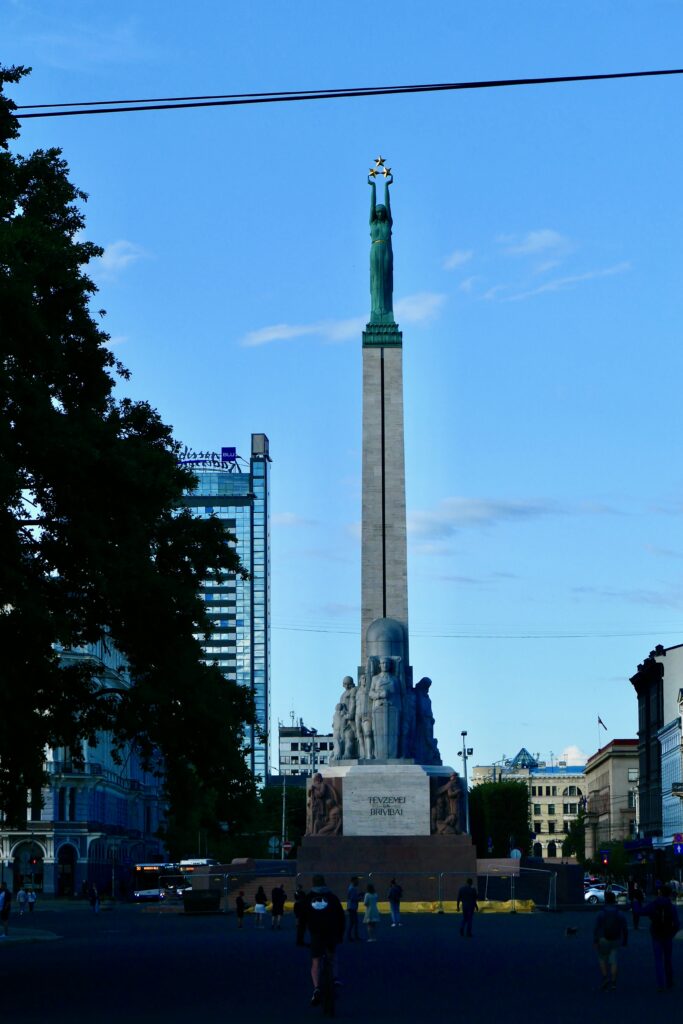
Latvia road trip
We created a blog for our road trip to Latvia. You may find it helpful, and you may pick up some tips, or more likely mistakes not to make that we’ve made 😉 Our Latvian road trip was part of a much larger European road trip.
The northern coast
On our road trip through Latvia we travelled from Häädemeeste in Estonia, down the coast to Salacgrīva, Vitrupe beach and Sigulda in Latvia. The coast in the north isn’t touristy at all, and yet it’s a really nice place to visit, in particular the beach which we had entirely to ourselves!
The capital
We then drove further west until we came to to the amazing capital, Riga. We really like Riga, and couldn’t understand why its not more well known. In fact we felt the same about all of the Baltic states. Riga has it all though, it’s really beautiful, full of history and there are loads of great restaurants and cafés to relax in.
Soviet era indulgence
We then travelled to the lovely seaside resort of Jūrmala, which fell like it was once a haven for rich Soviet-era people. It was lovely, but it felt very different to western European beaches. In fact all of Latvia was like that, very non-western, and much more old Russian style.
Olde worlde Latvia
Further west is Kuldīga, which was like a living museum of medieval days, absolutely bizarre. There’s also a lovely river besides the town that’s great to have a picnic at.
The spa town
We stayed over at Lake Usma, which is a spa resort, and quite touristy. The campsite was very busy with camper vans and overlanding vehicles that looked kitted out for Africa!
The western coast
Over at the west coast we visited Ventspils and Liepaja with their busy ports. Again these two sizeable towns were great for people watching, and it really felt like we were getting a realistic look at how Latvian people really are.
Real Latvia
At that point, the weather really turned on us, and it rained for days on end for a good while. We holed up in the village of Vainode, getting to know a pair of Latvian twins who’d worked in Northern Ireland, and thus spoke English really well. We really learnt a lot about Latvia on those rainy days!
When the weather calmed down a bit, we moved on from Vainode onto lovely Lithuania.
Map of our road trip through Latvia
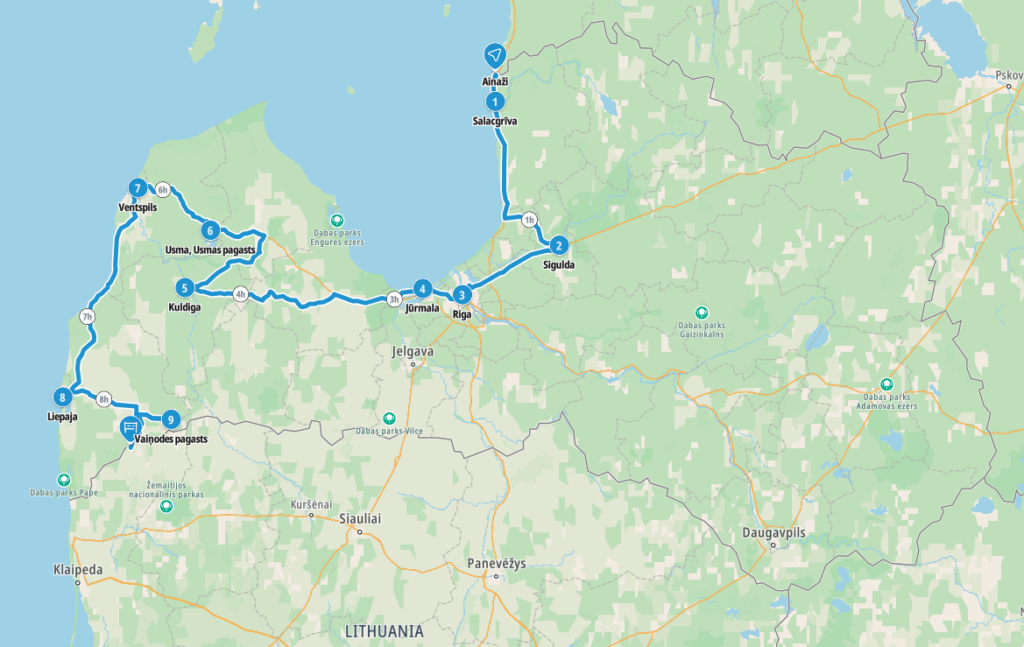
This is a map of the road trip that we took through Latvia.
Our route took us from Salacgrīva – Vitrupe – Sigulda – Riga – Jūrmala – Kuldīga – Lake Usma – Ventspils – Liepaja – Vainode
Our favourite places in Latvia
These are some of the best places that we explored on our road trip through Latvia. We’ve put them in alphabetical order.
Ainaži
Ainaži is a border point between Estonia and Latvia. Although at first glance, the countries look to be similar, it quickly becomes quite apparent that the countries are really quite different, especially in the mannerisms, culture and the way they drive!
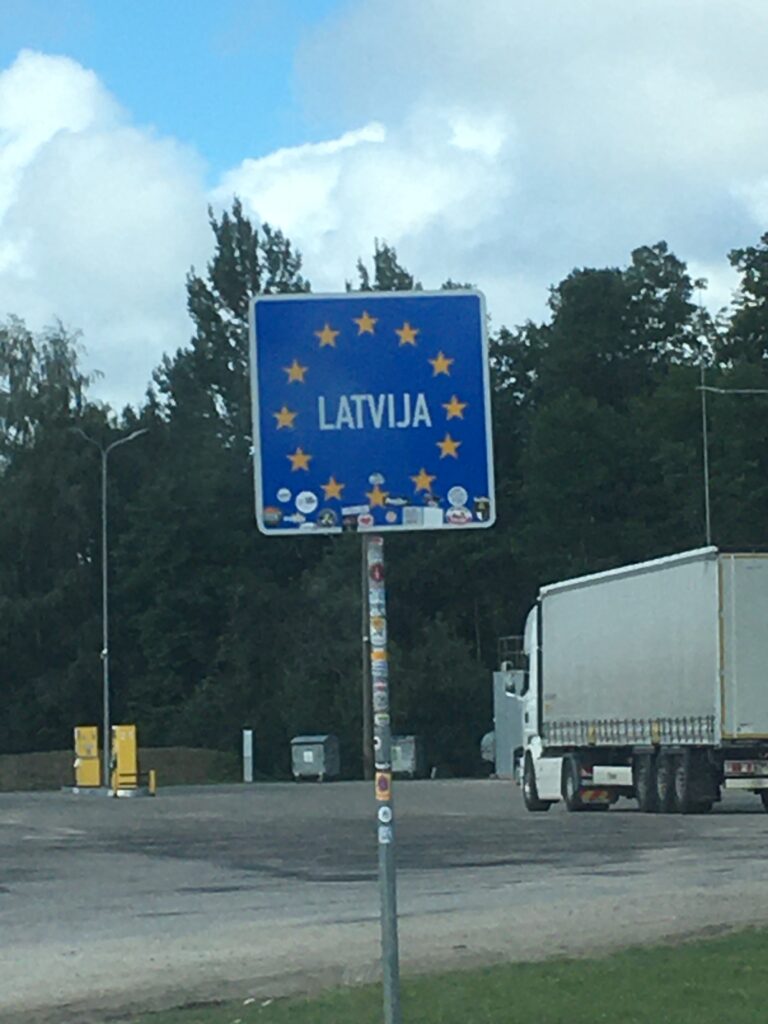
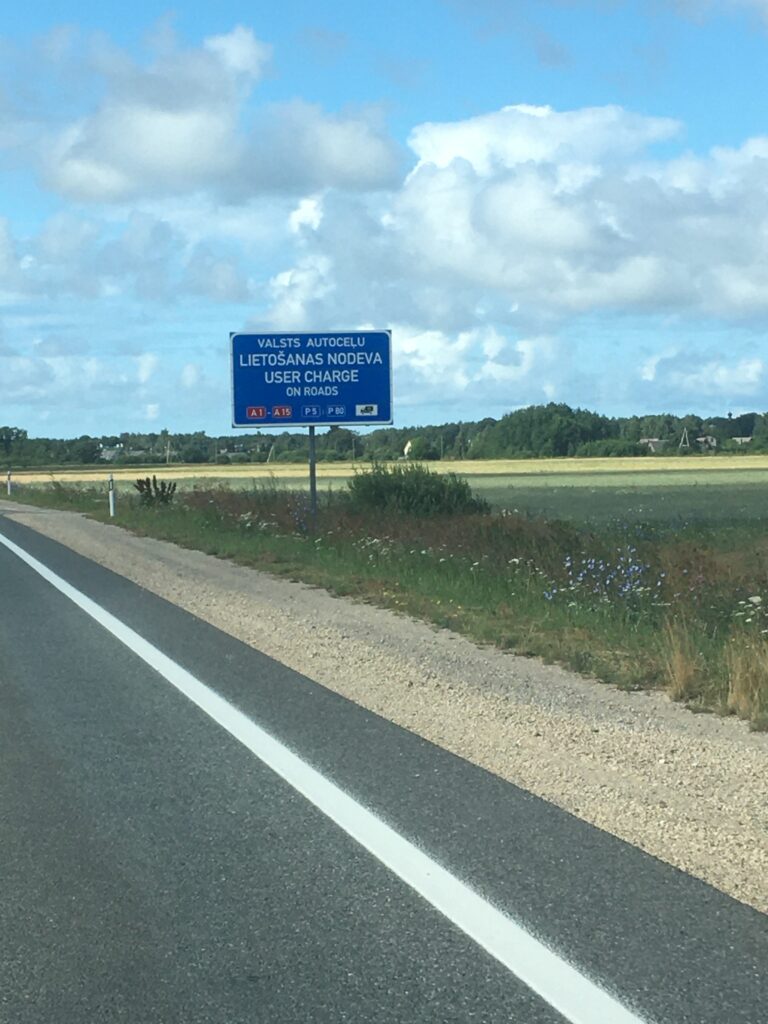

Jūrmala
Jūrmala is a popular resort town in Latvia, located along the Gulf of Riga, just west of the capital, Riga. It is known for its long sandy beaches, charming wooden houses, and scenic natural surroundings. The town was originally developed as a spa destination and a health resort in the 19th century. The arrival of the railway in the 1870s significantly boosted Jūrmala’s development, making it more accessible to people from Riga and beyond. As a result, the town began to attract more visitors and residents, including artists, intellectuals, and elites from the Russian Empire. The town’s resort-style development continued through the 20th century, with a mix of spa facilities, holiday homes, and vacation villas that shaped its current character.
Jūrmala really is a pretty seaside town, and so friendly too. When we were there, there were people dancing in the street. It was all smiles galore! Great beach – lovely soft white sand and there are plenty of restaurants and cafés. It’s located close to the capital, Riga, on the northern coast, and the beach is 21 miles (33 km) long!
Historically it was the Russian premier’s favourite holiday destination, and today it remains very popular with tourists and locals alike. It’s clearly a wealthy place, especially in comparison to much of the rest of the country.
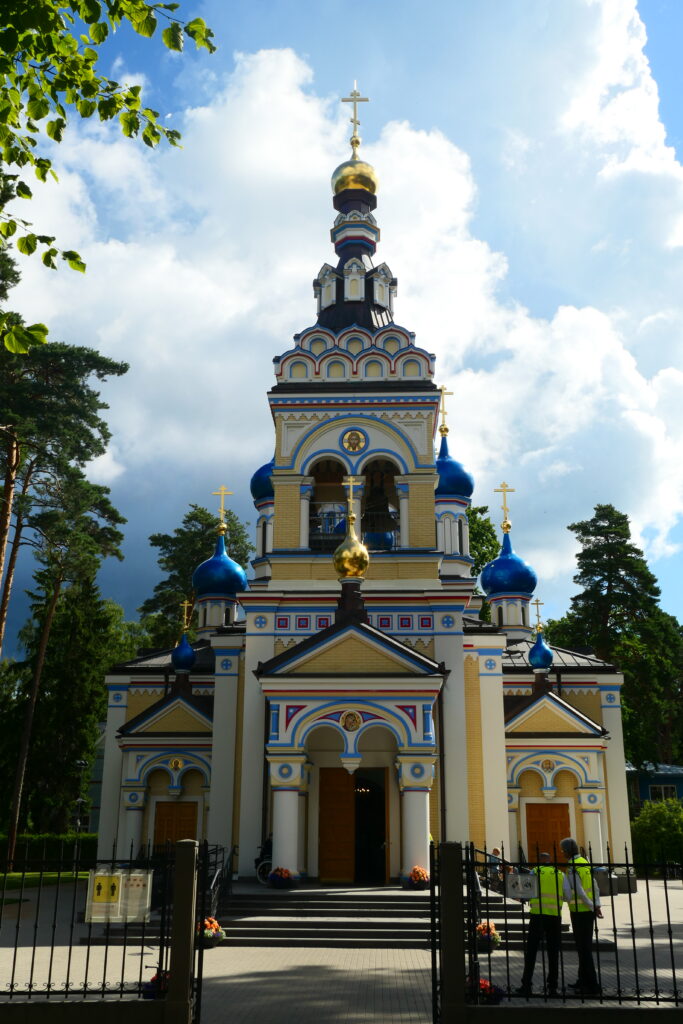
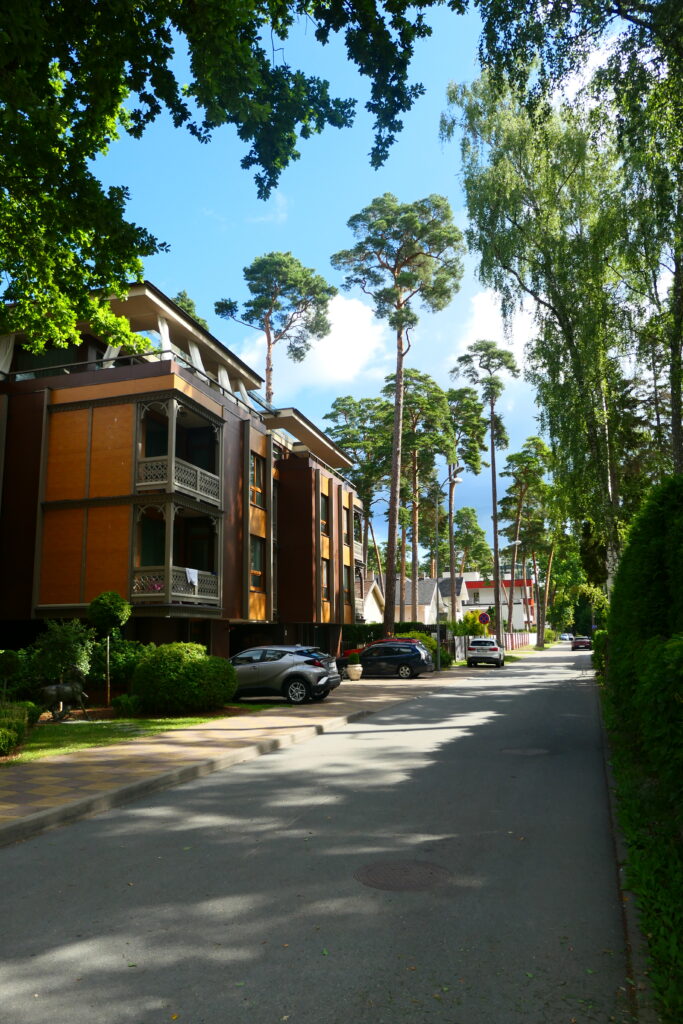
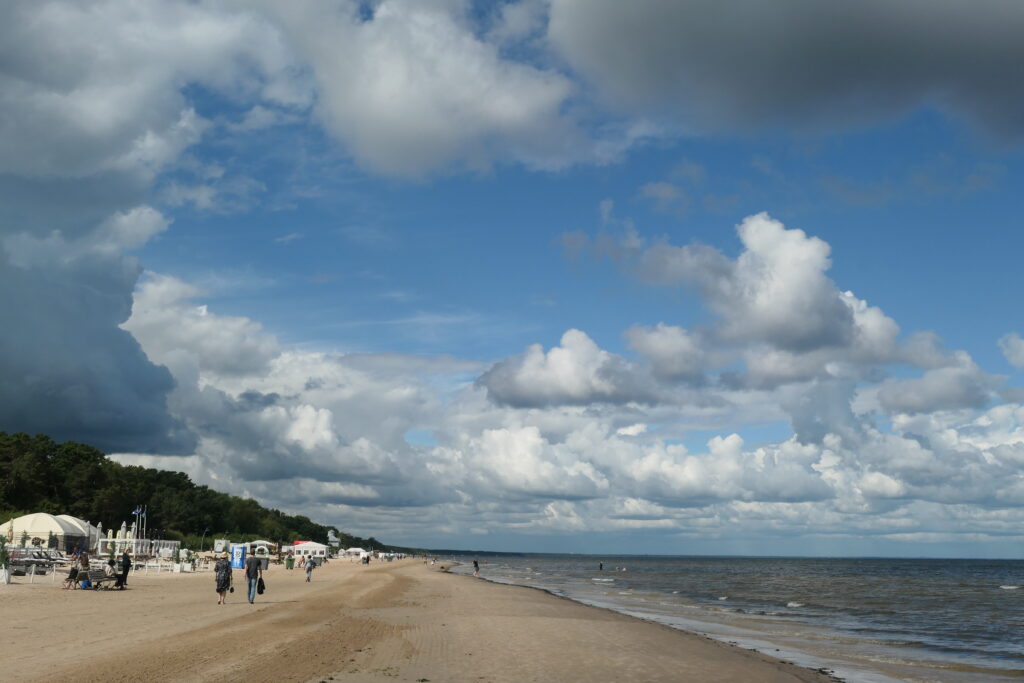
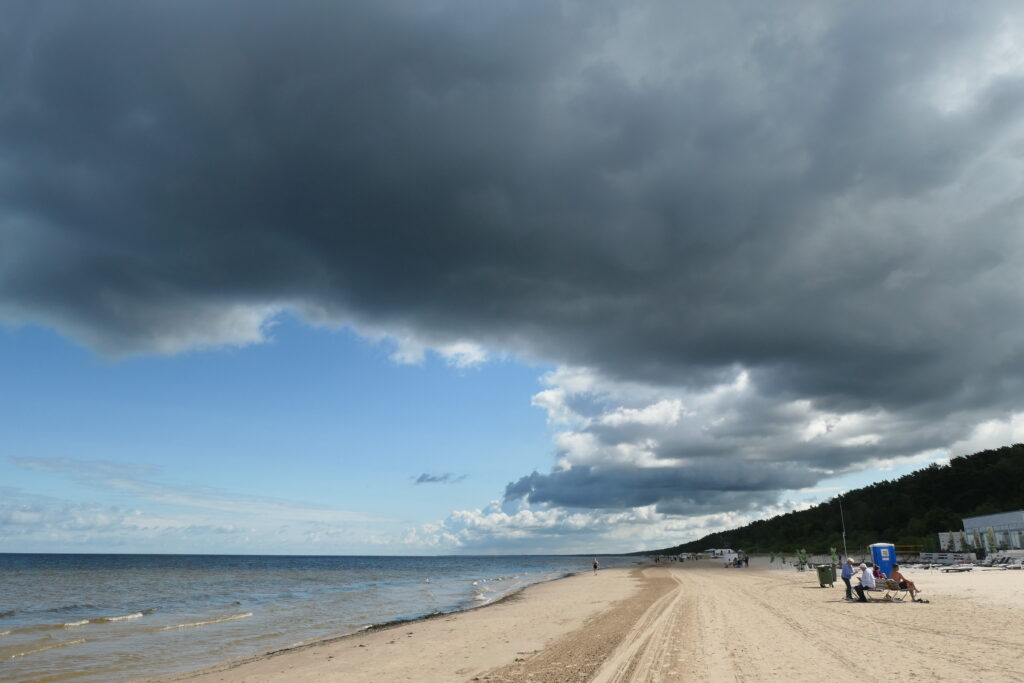
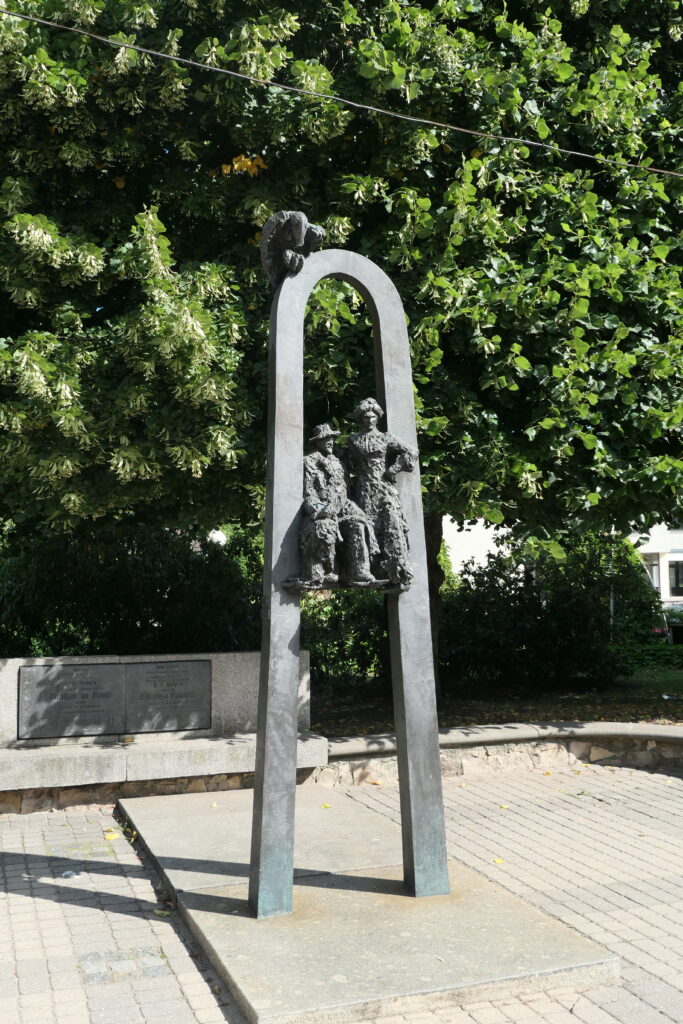
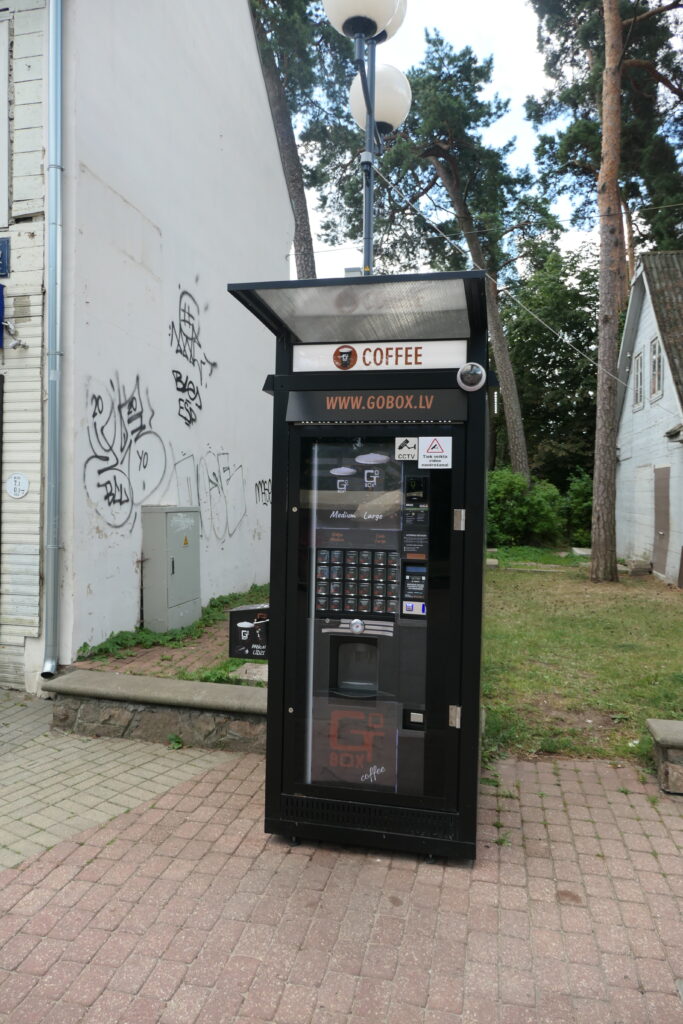
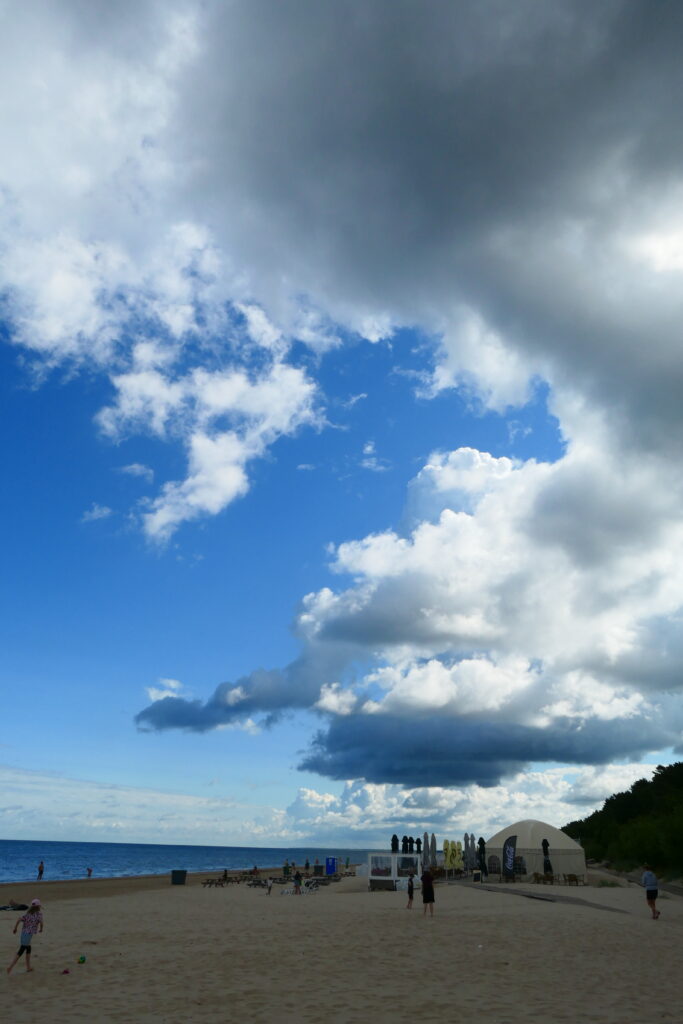
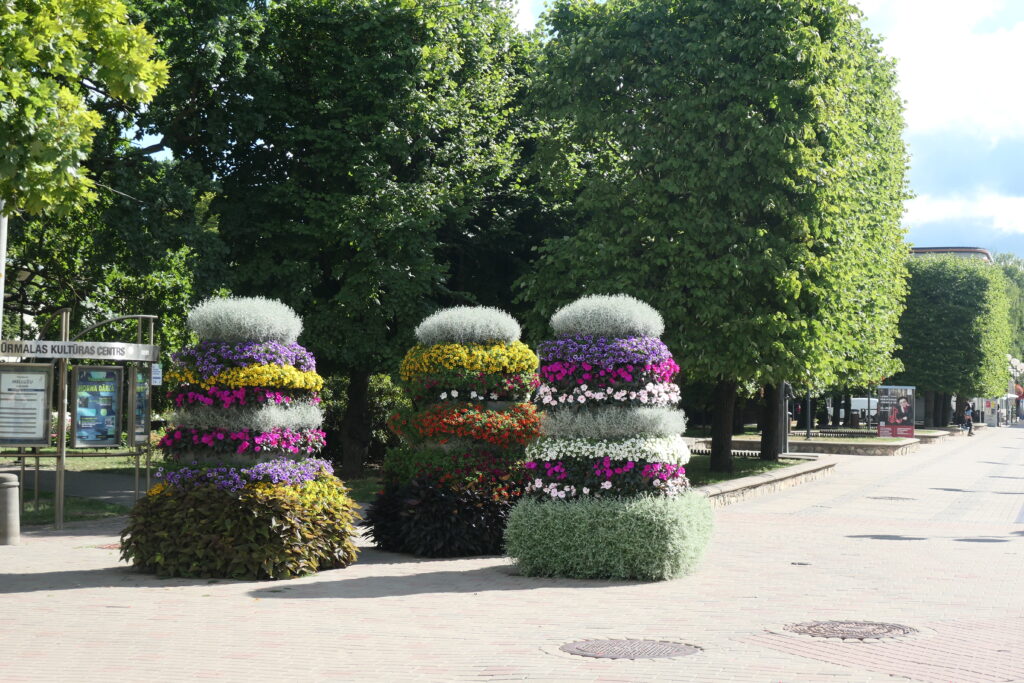
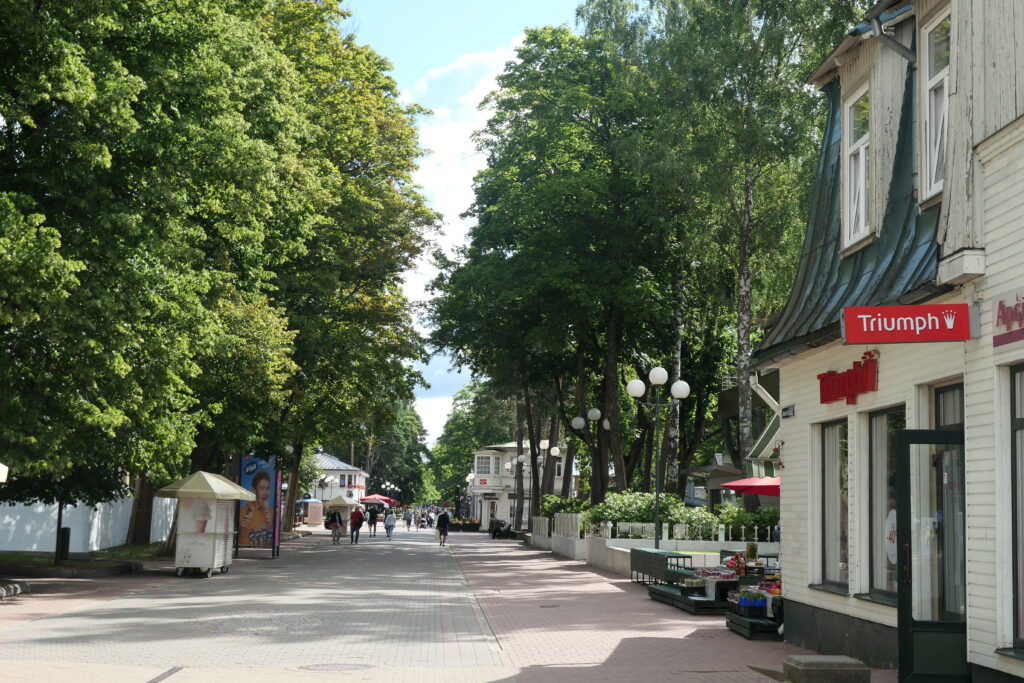
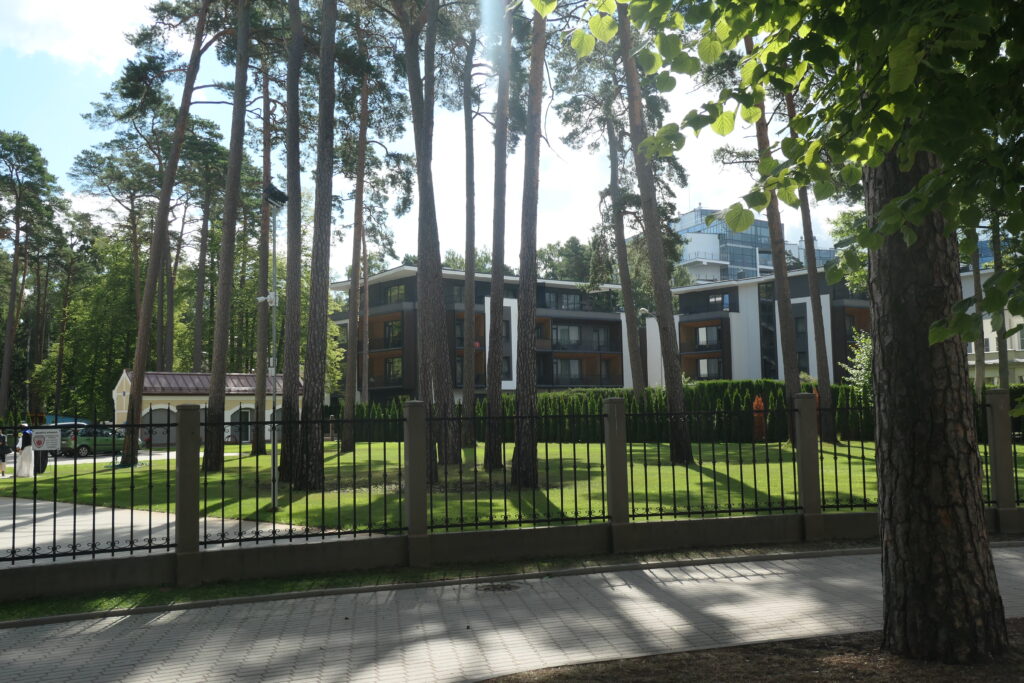
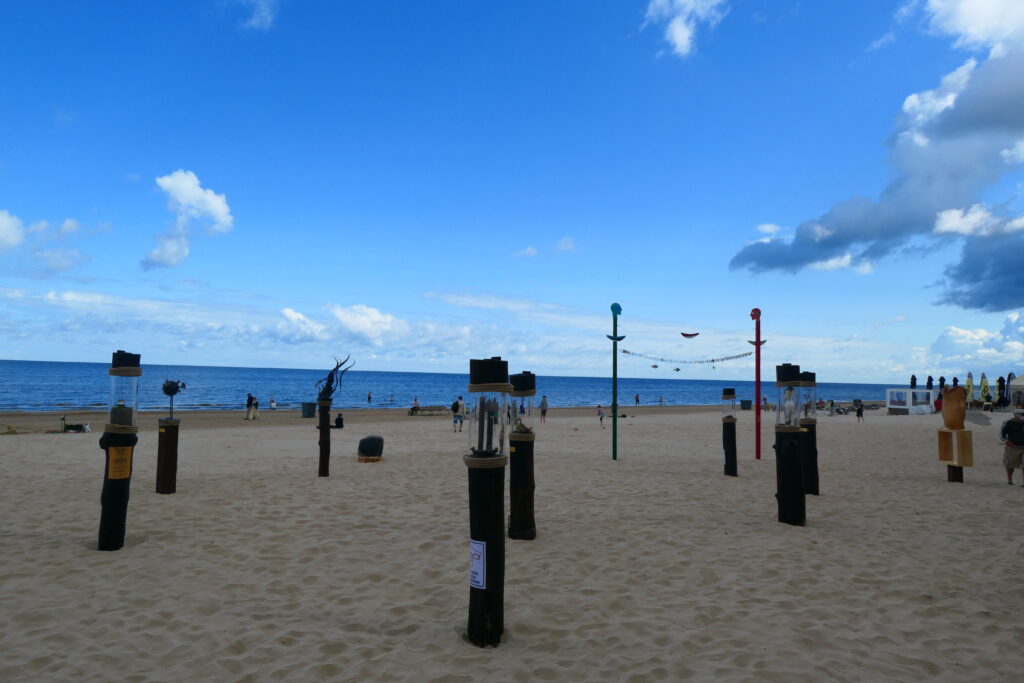
Kabile
Kabile is a small village in the Kuldīga Municipality in western Latvia, located in the historical region of Courland. The village has a population of about 311 people (2021). One of its most notable landmarks is Kabile Manor, which was built in the 18th century. The manor is still standing today and has been turned into a cider and wine production facility. It’s a nice place to stop and tale a break.
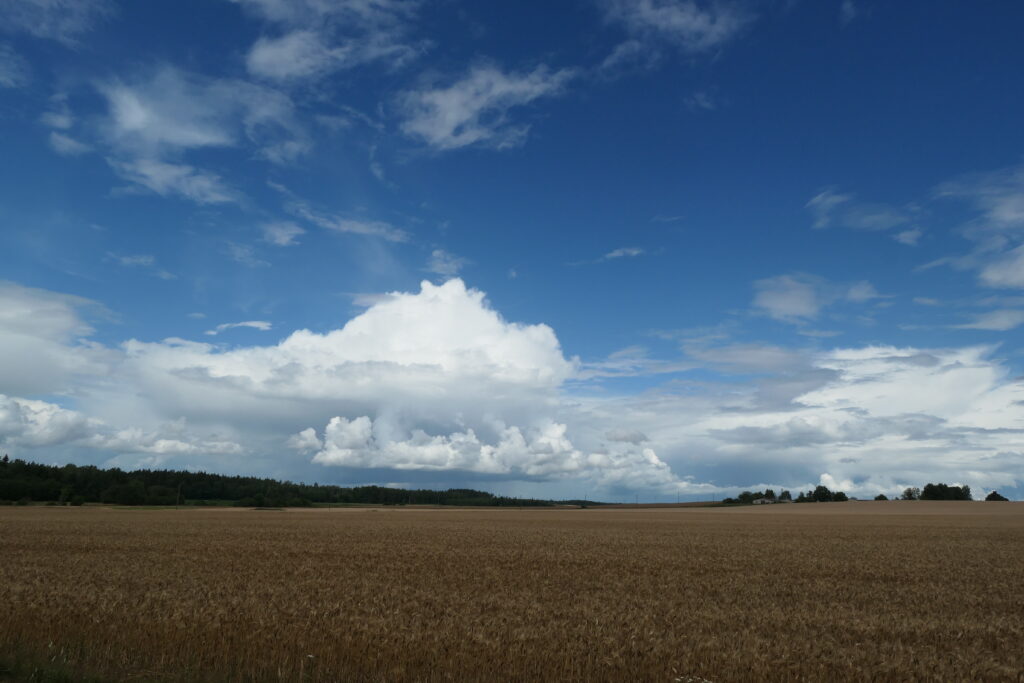
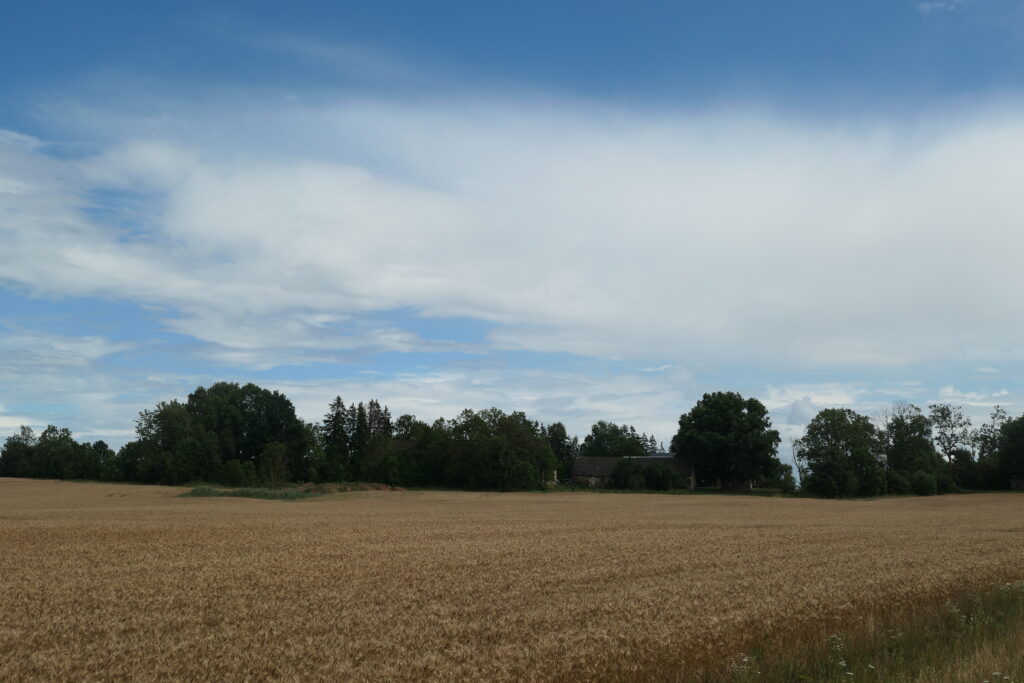
Kuldiga
Kuldiga is a picturesque town in western Latvia along the Alekšupīte River, with a population of around 10,000 people (2024). It’s most known for its preserved historical architecture and streets, almost like a living museum. The town also has the widest waterfall in Europe, the Kuldiga Waterfall (Ventas Rumba), which is around 790 ft (240 m) wide. The surrounding area also offers some lovely walking paths and views.
Among the historical buildings is the Kuldiga Castle, built in the 17th century, and the 19th century brick architecture that lines its cobbled streets. The town’s architecture reflects its prosperous past, when it was a vital trade center during the 17th and 18th centuries.
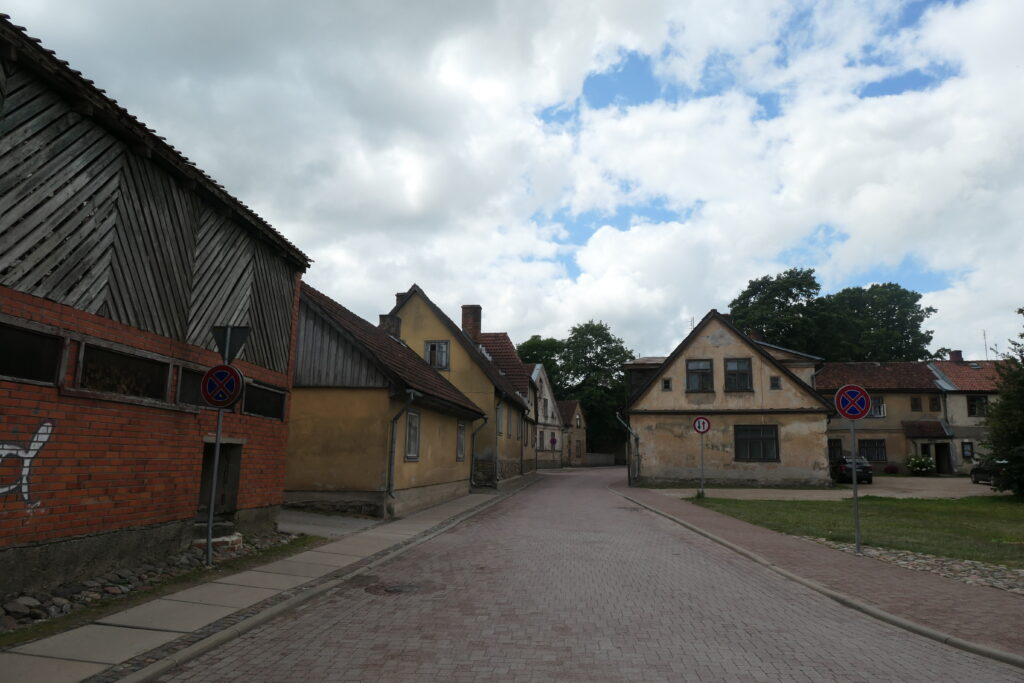
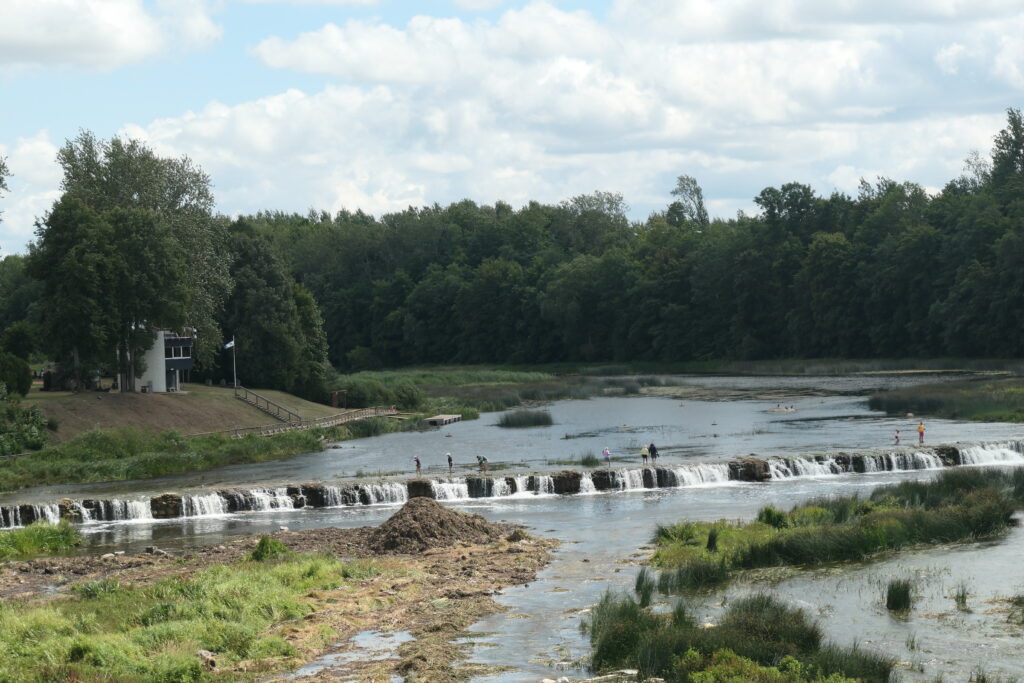
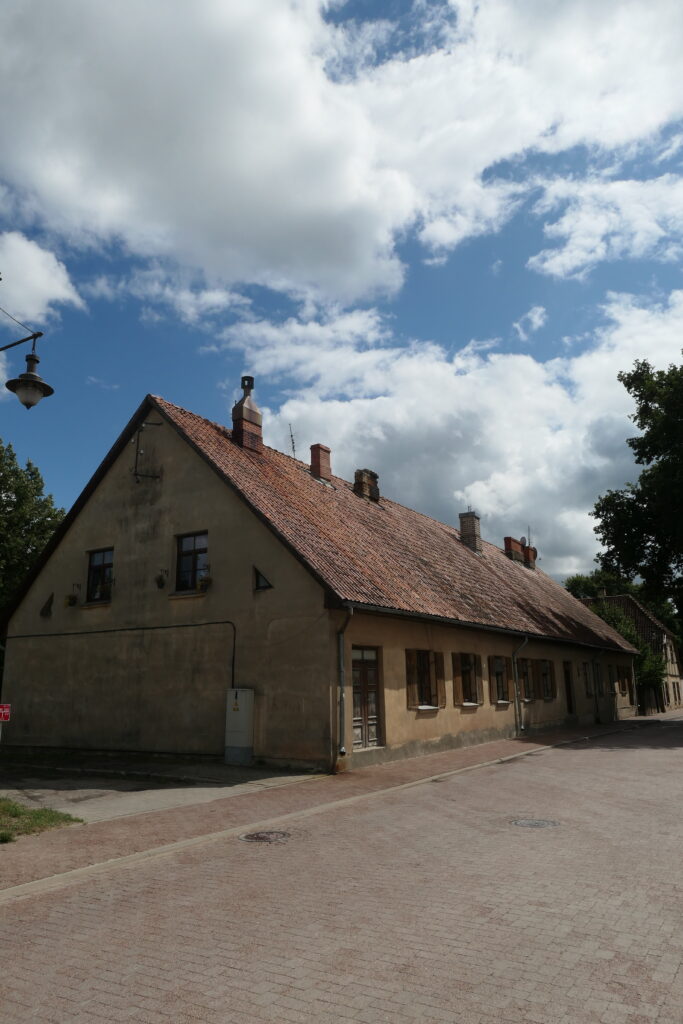
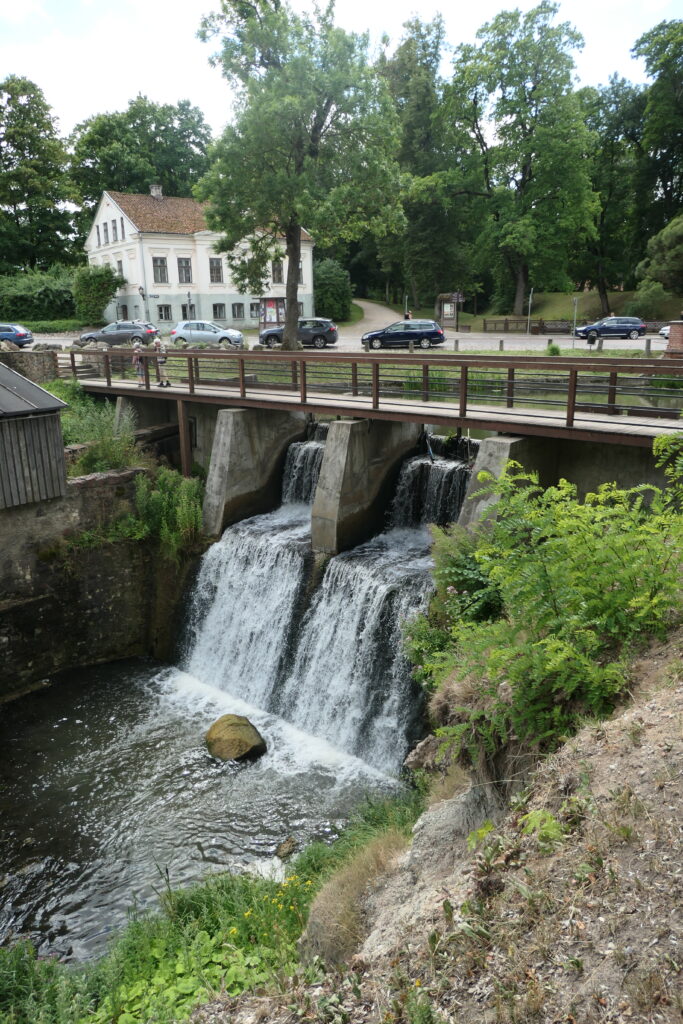
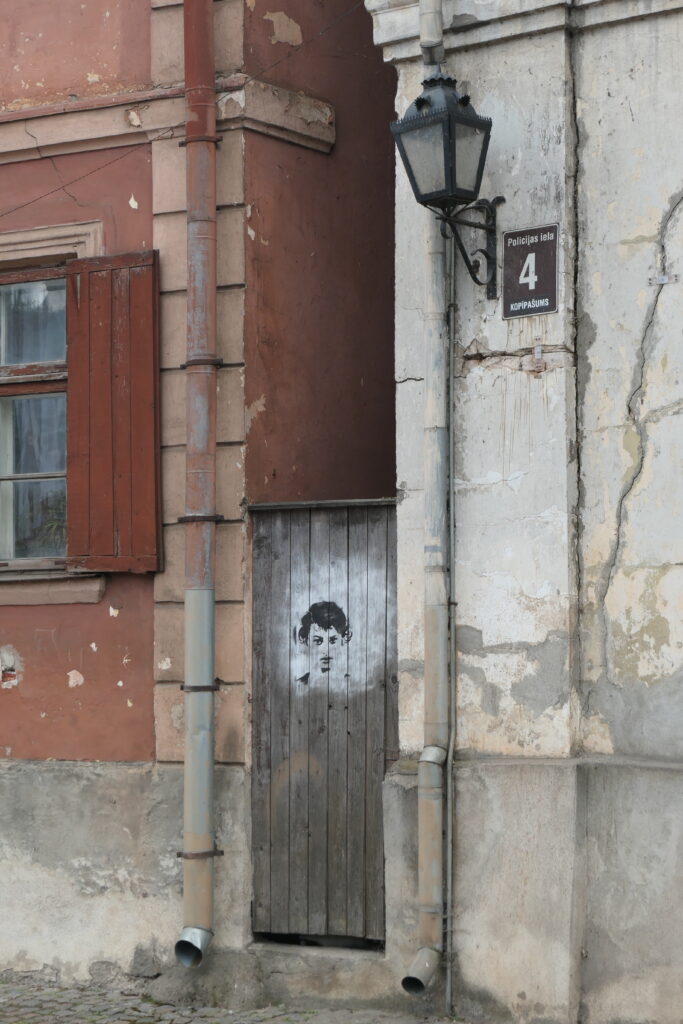
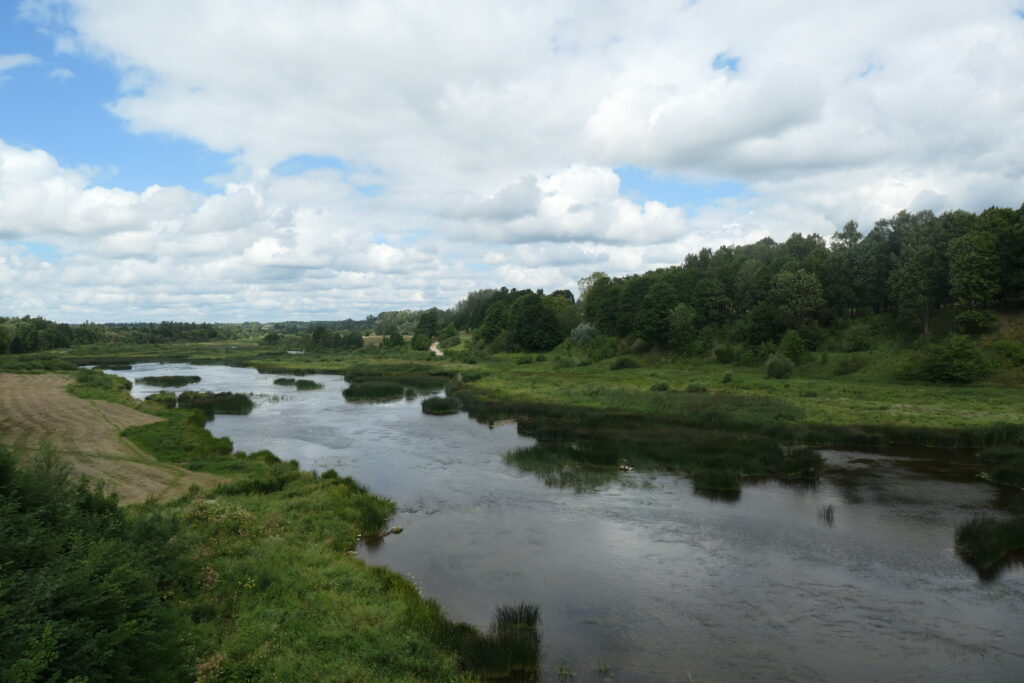
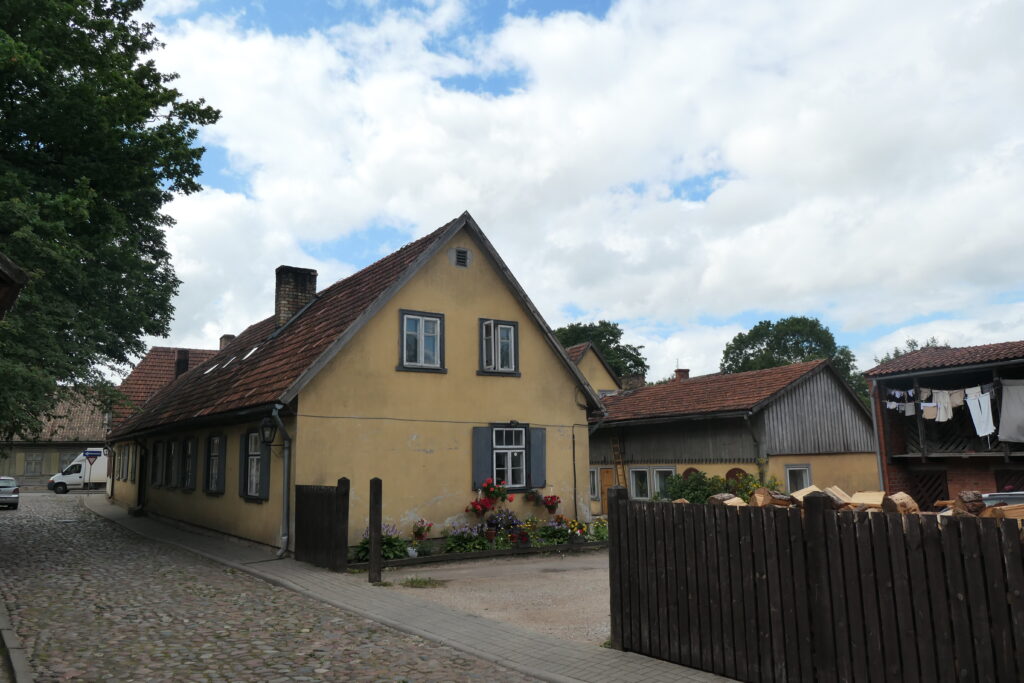
Liepāja
Liepāja is a coastal city located in southwestern Latvia, along the Baltic Sea, with a population of around 80,000. It has developed from a medieval settlement into a significant port city, and during the Soviet era, it hosted a large naval base. It is now the third largest city in Latvia.
Liepāja has a notable blend of historical architecture, with both classic wooden buildings and impressive 19th and 20th-century structures. One of the most prominent landmarks is the Liepāja Orthodox Cathedral, a stunning example of Russian-Byzantine architecture.
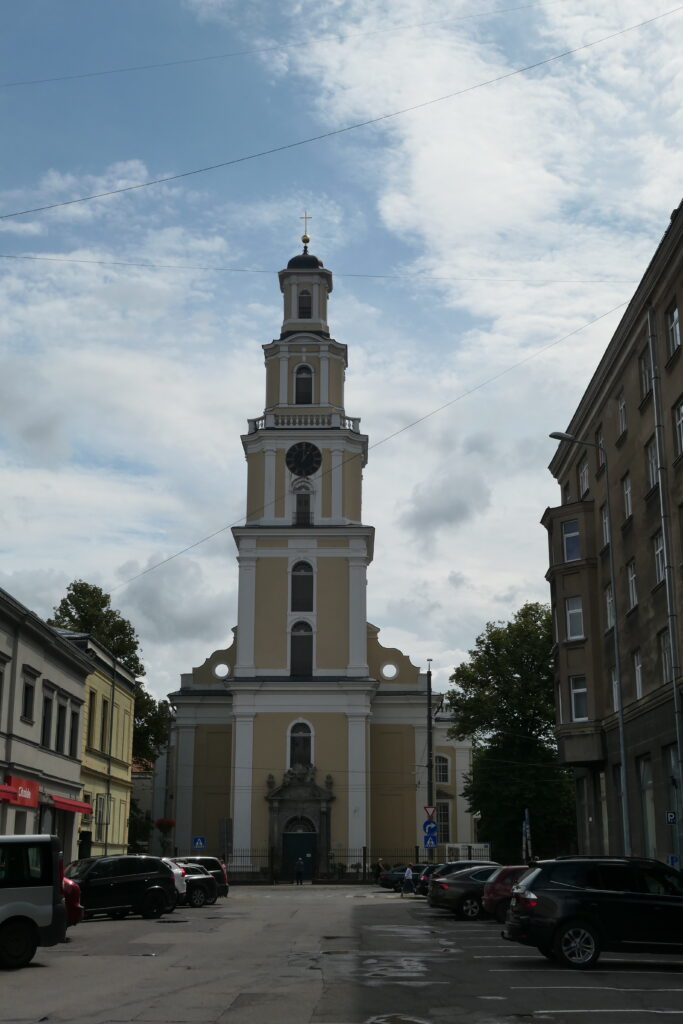
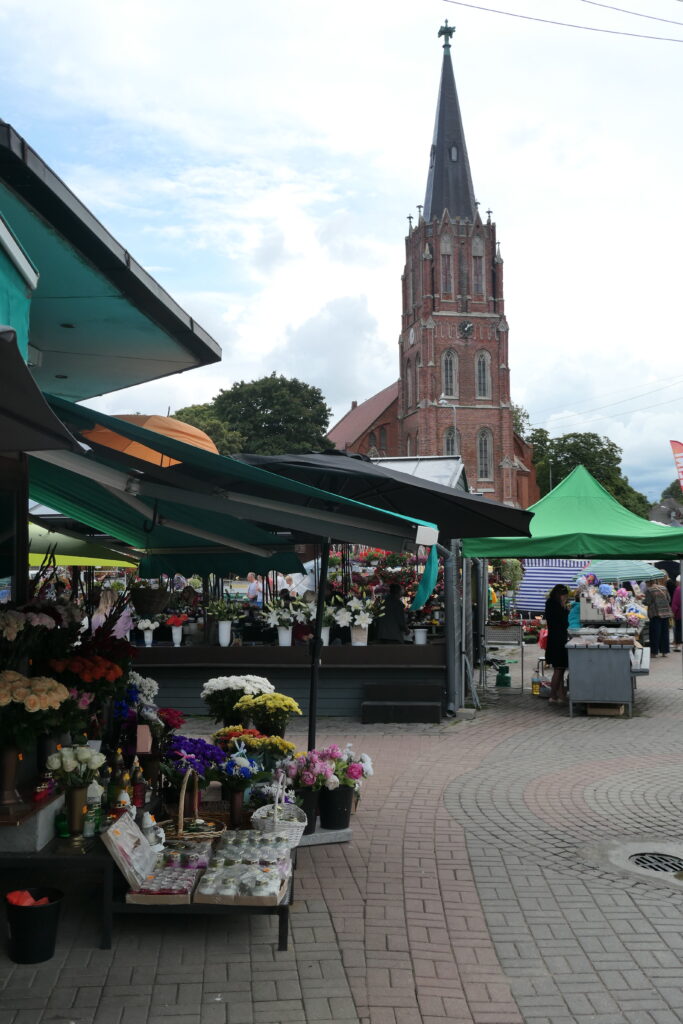
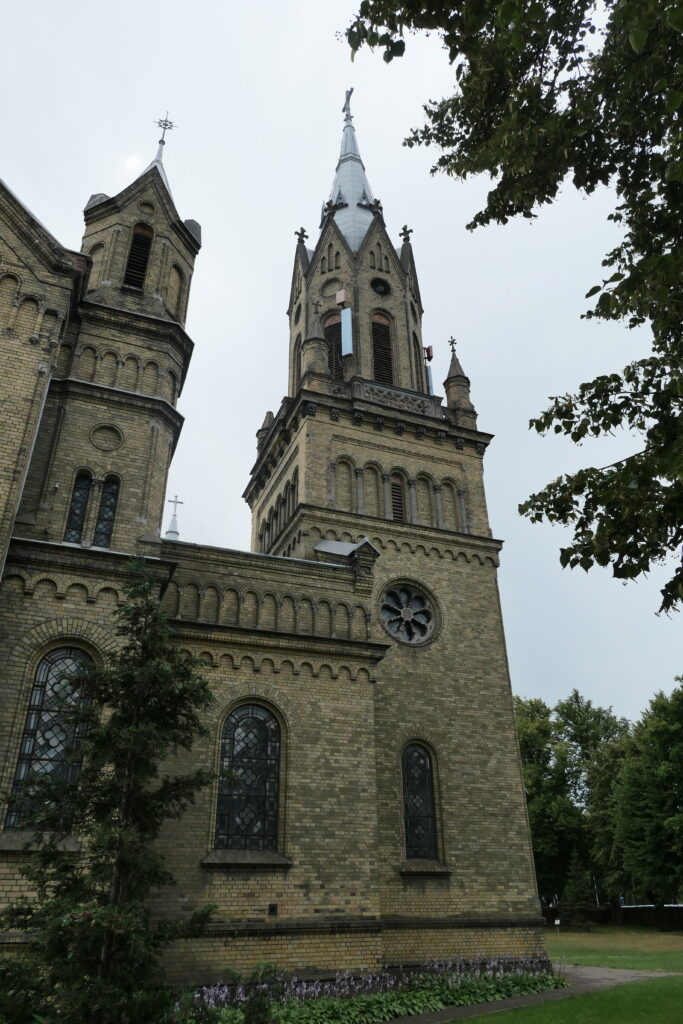
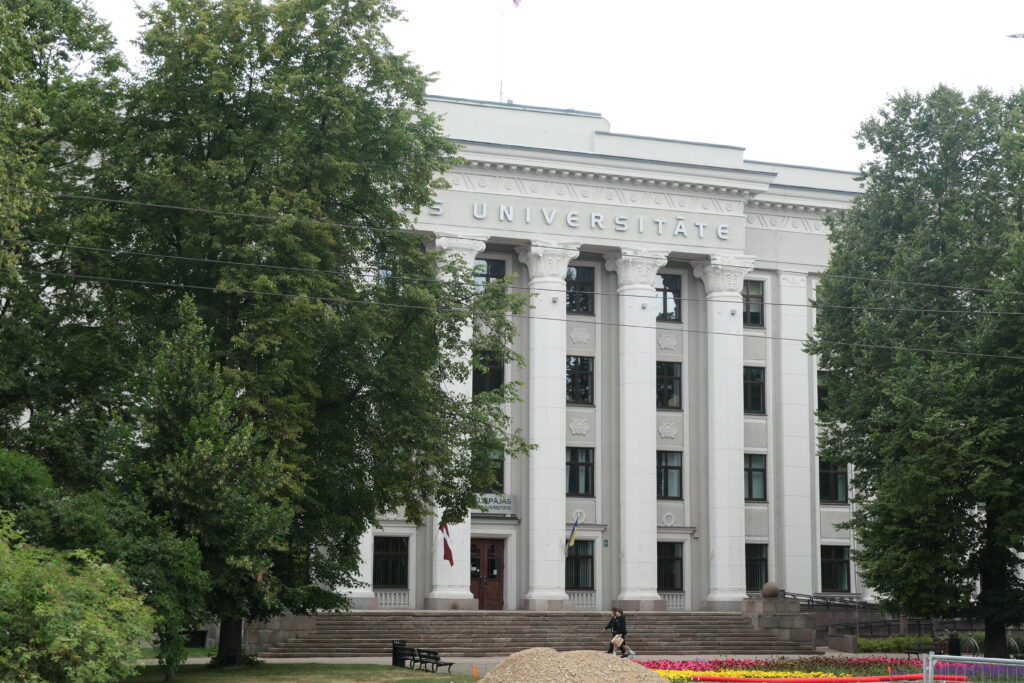
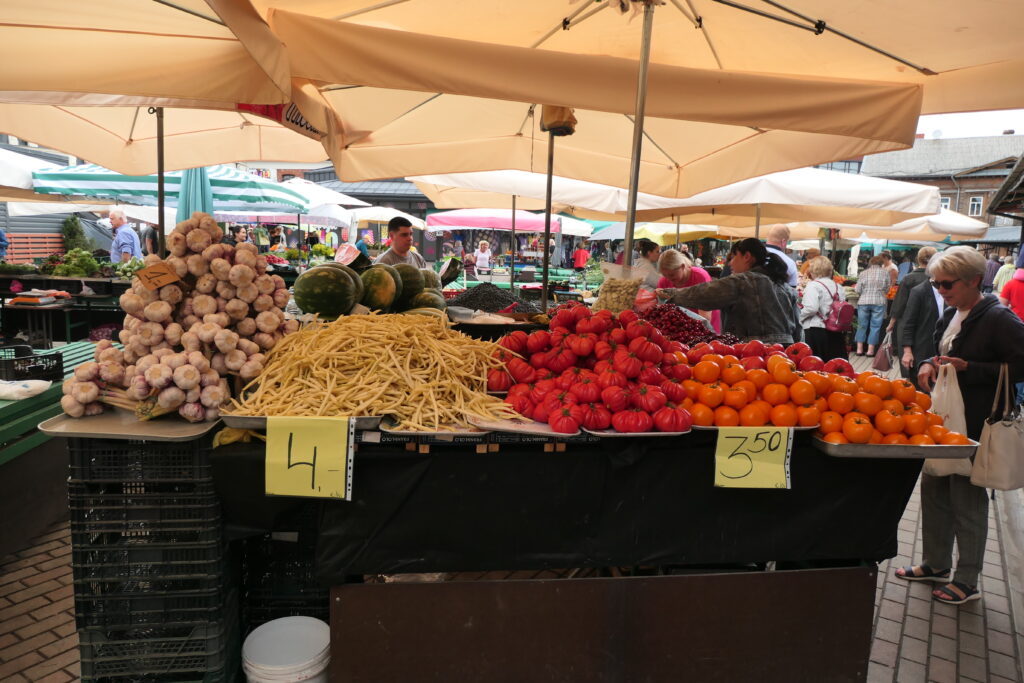
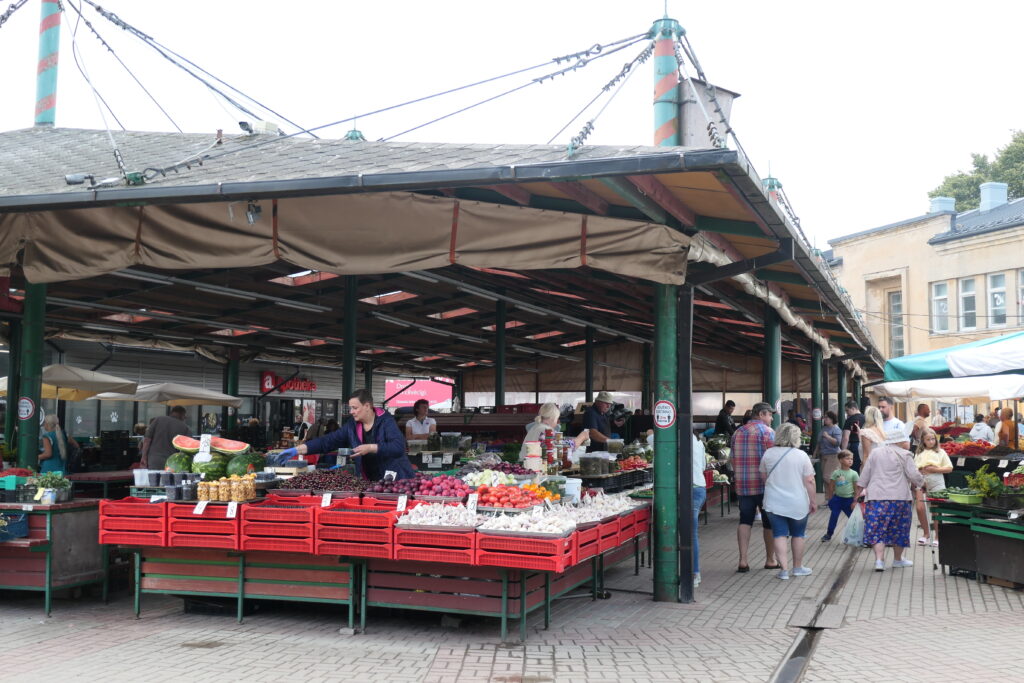
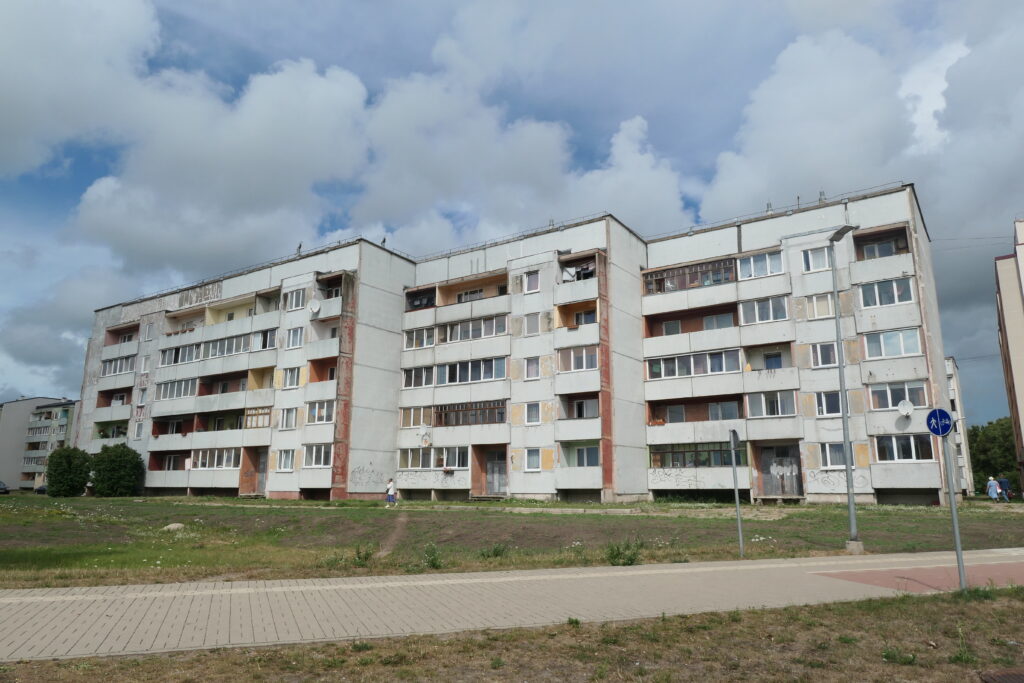
Mežsētas
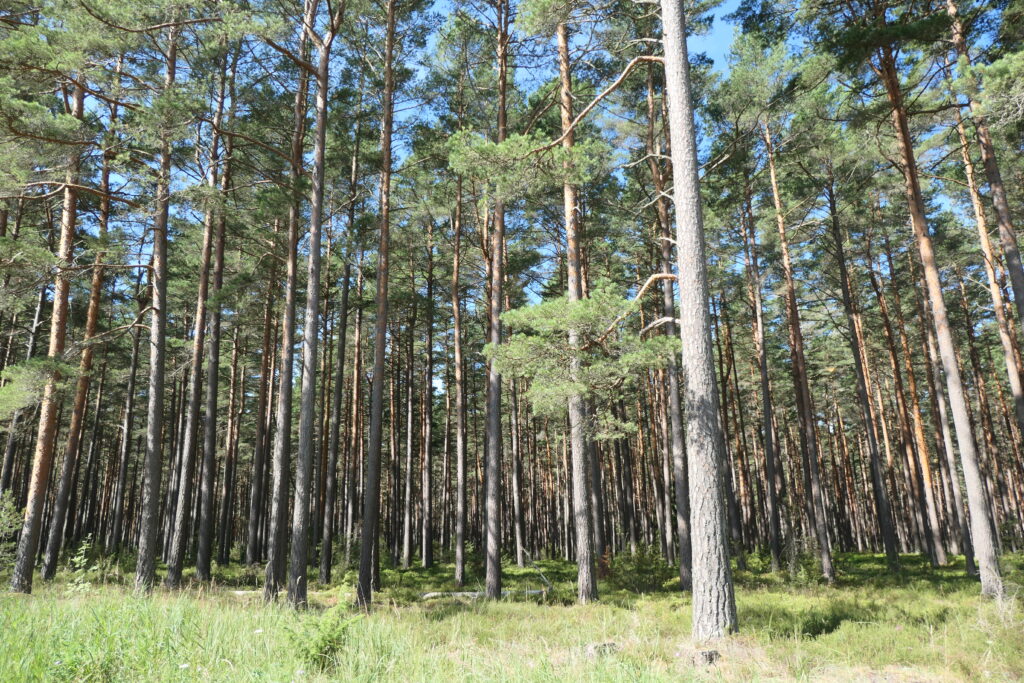
Mežsētas is a small rural locality in the west of Latvia, located near Ventspils on the coast. The whole area is lovely, peaceful countryside, with farmland and forests surrounding the settlement. It’s a typical Latvian village, with a small, friendly population, and is a great place for a quick break.
Pasiekste
Pasiekste, a small village near Ventspils in the west of Latvia. One of its key features is a traditional windmill, which has a restaurant attached, and is a great place top stop for a break. There’s also storks nesting nearby 🙂 Surrounded by forests and farmland, Pasiekste has a small population, with residents primarily engaged in agriculture.
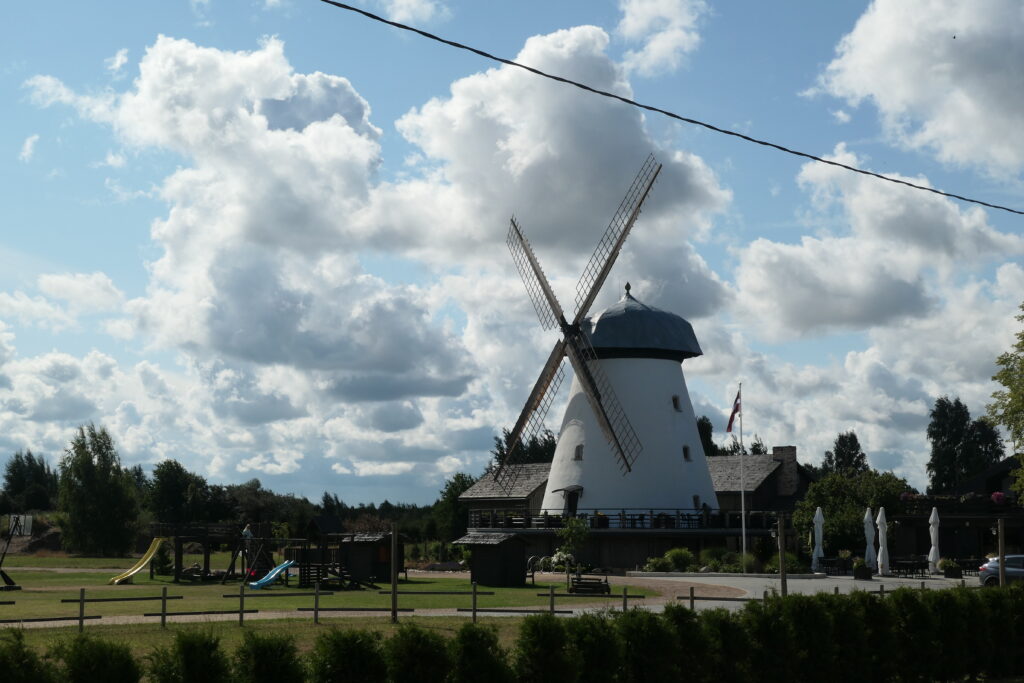
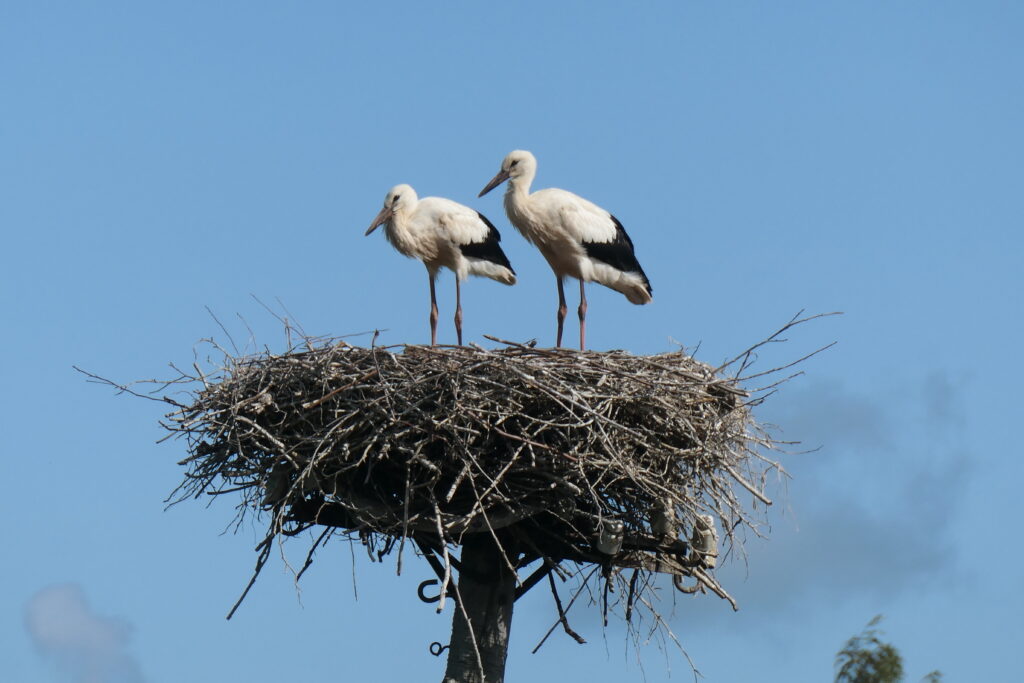
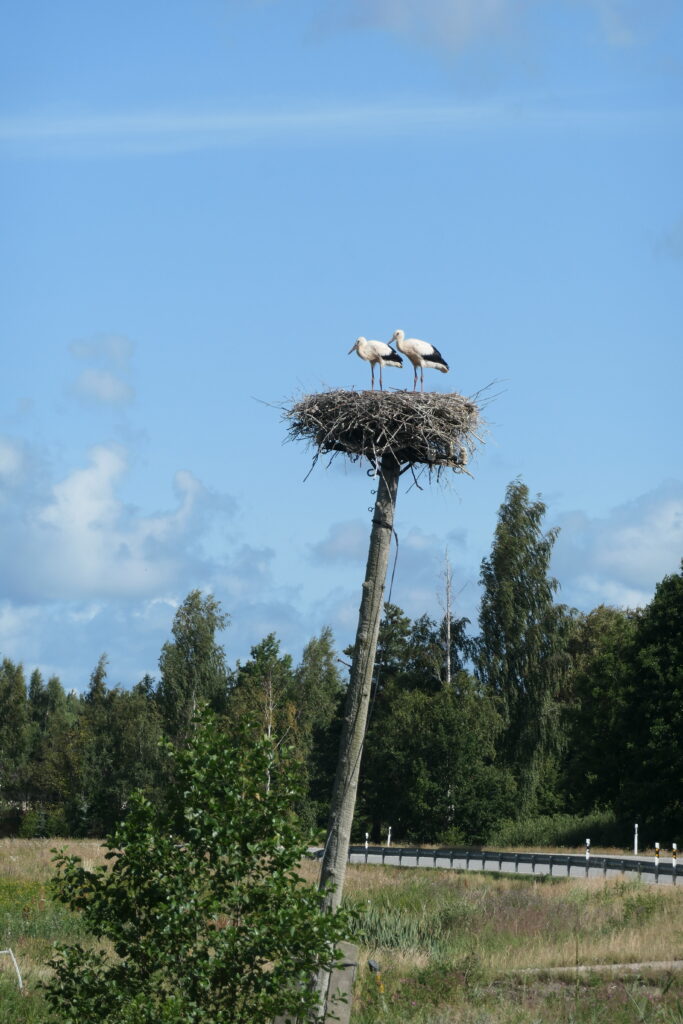
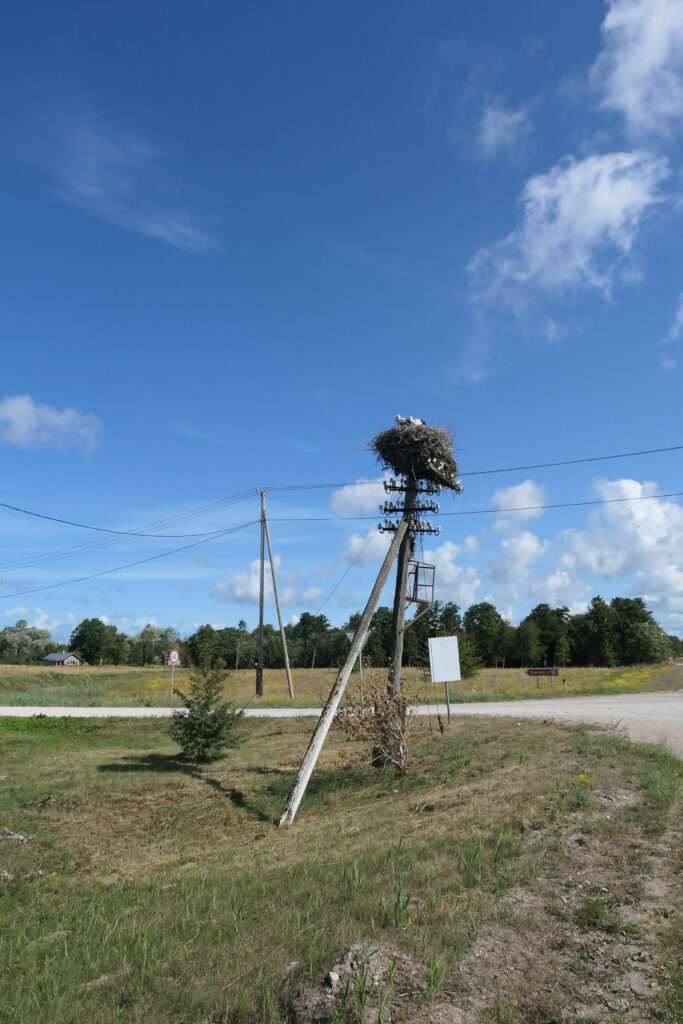
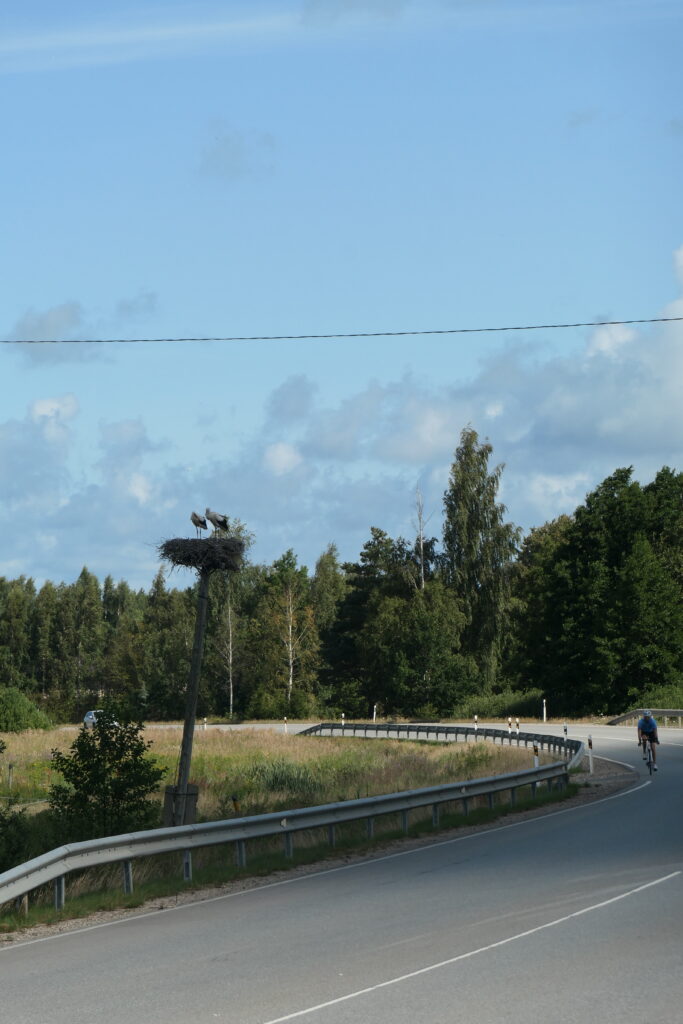
Putniņi
Putniņi is a small rural settlement in central Latvia, not far from Sigulda. The village is surrounded by farmland and forests, typical of the Latvian countryside. With a low population, Putniņi is primarily an agricultural community, and is a great place for a quick break to watch the storks!
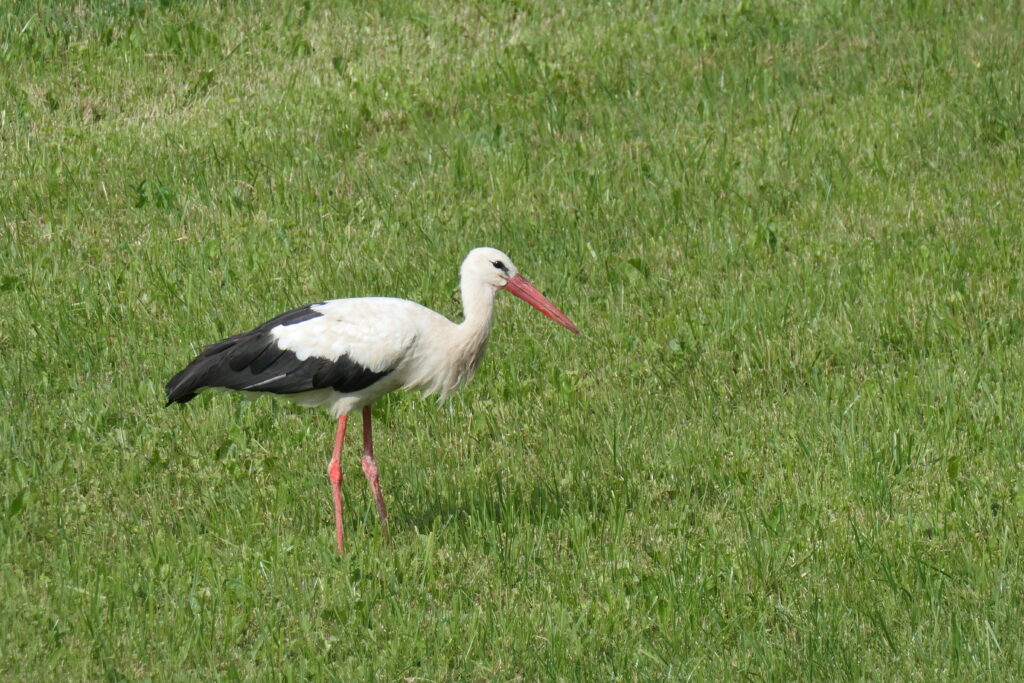
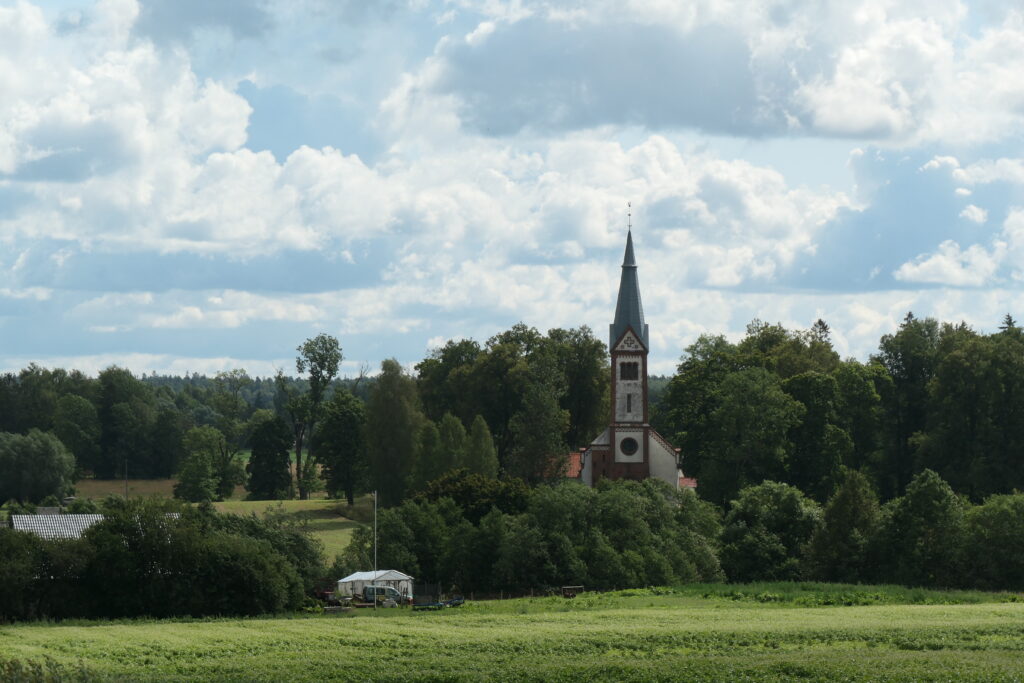
Riga
What a great city Riga is, so picturesque and at the same time so lively! Way too many bars – can that be a thing? There’s loads to see and do, with loads of live music with a great atmosphere.
Riga is the capital of Latvia, and the wider metropolitan area is home to around 870,000 people (2024). Its roots date back to 1201 when it was founded by German crusaders, and over the centuries, it became a key trading centre within the Hanseatic League. It’s located in the centre of the country on the Gulf of Riga, and is a UNESCO World Heritage Site, due to its well-preserved medieval buildings in the Old Town.
One of the city’s most significant landmarks is the Freedom Monument, a symbol of Latvia’s independence and sovereignty. Completed in 1935, the monument stands 138ft (42 m) tall and commemorates the Latvian War of Independence (1918-1920). It depicts a woman holding three stars, representing the three historical regions of Latvia.
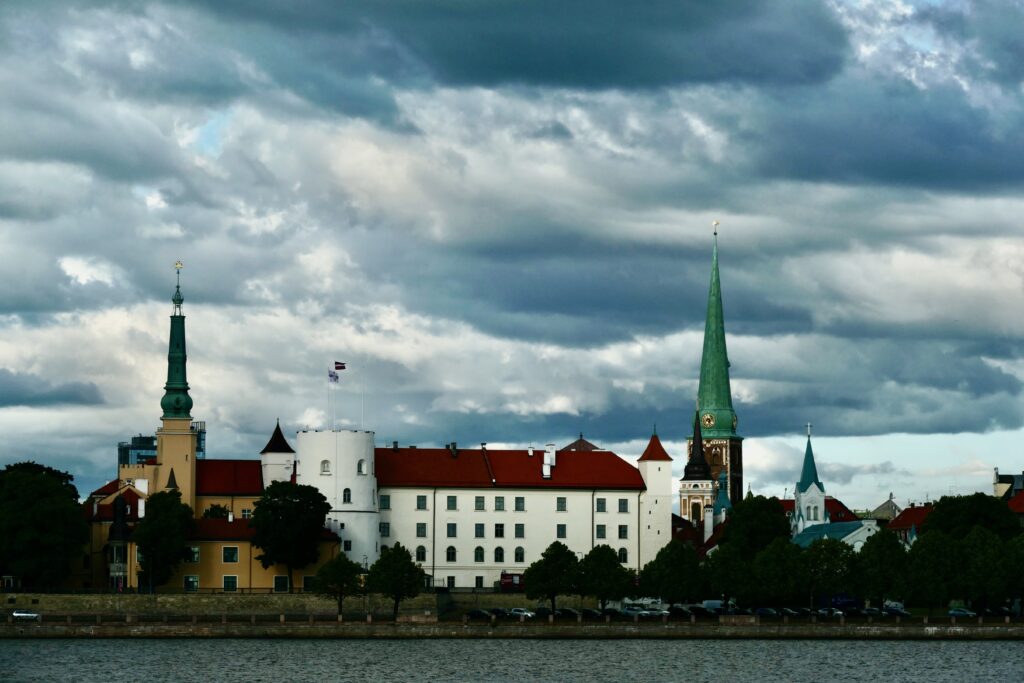
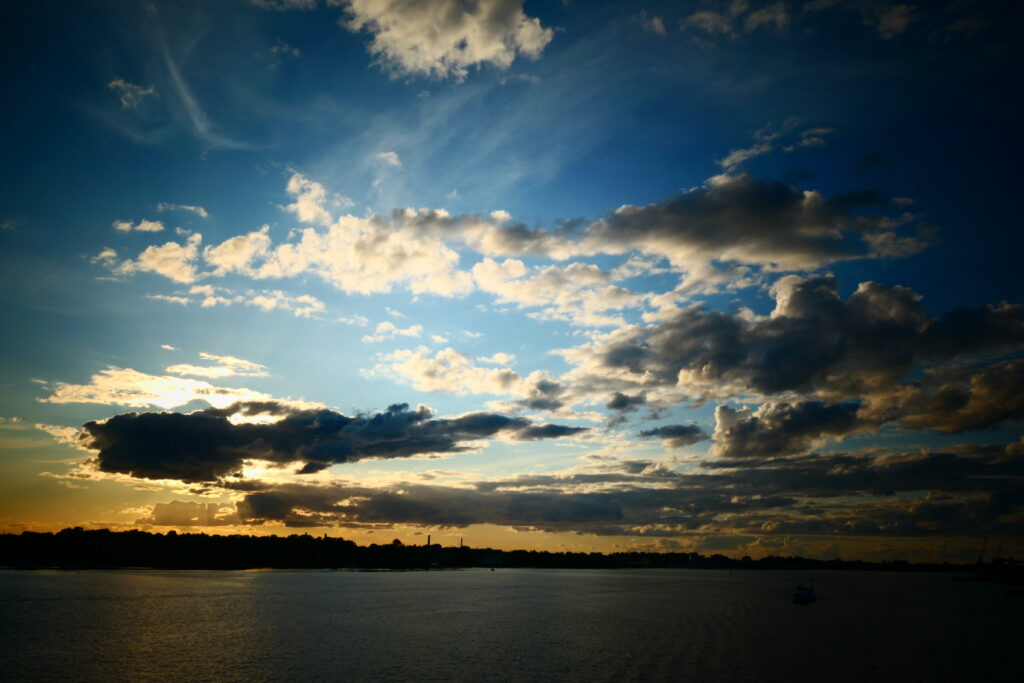
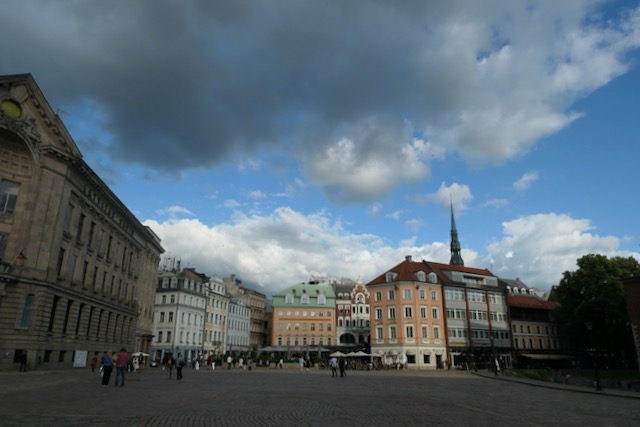
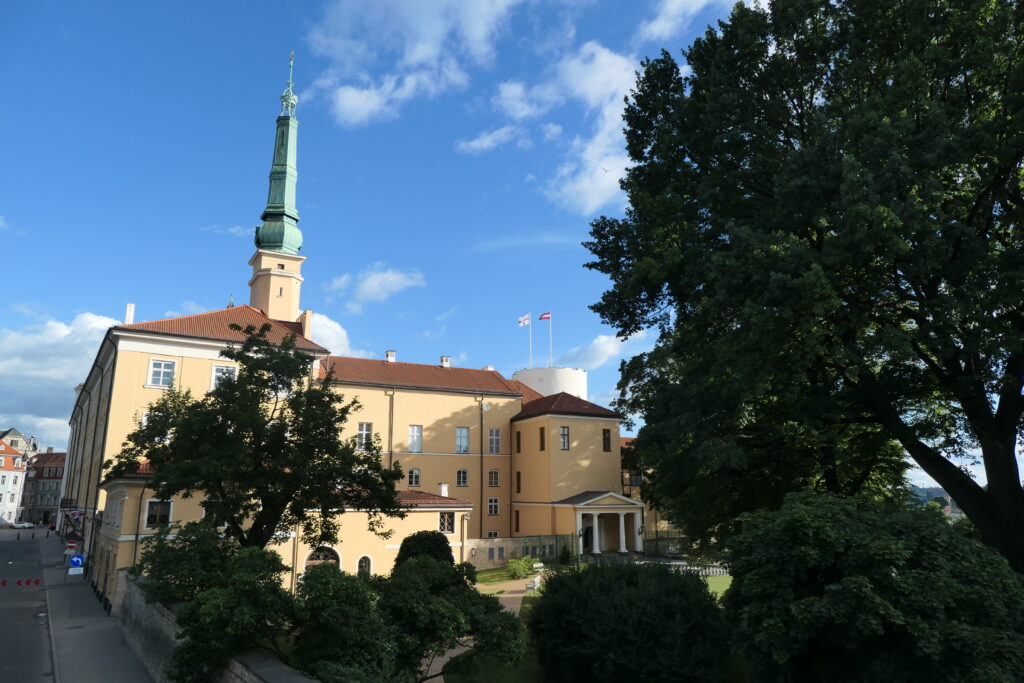
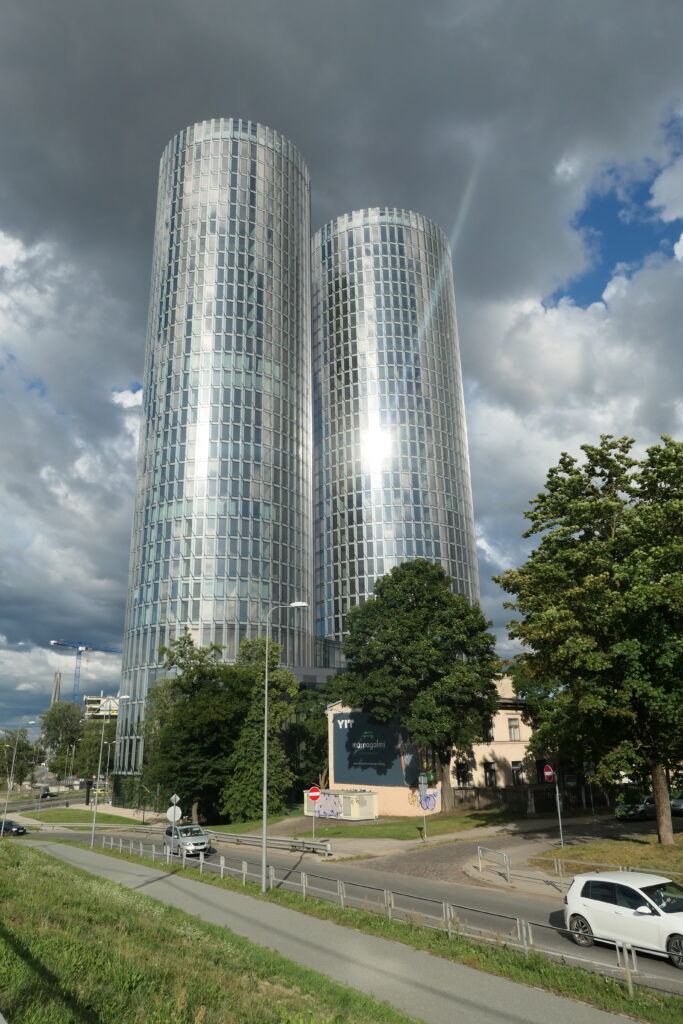
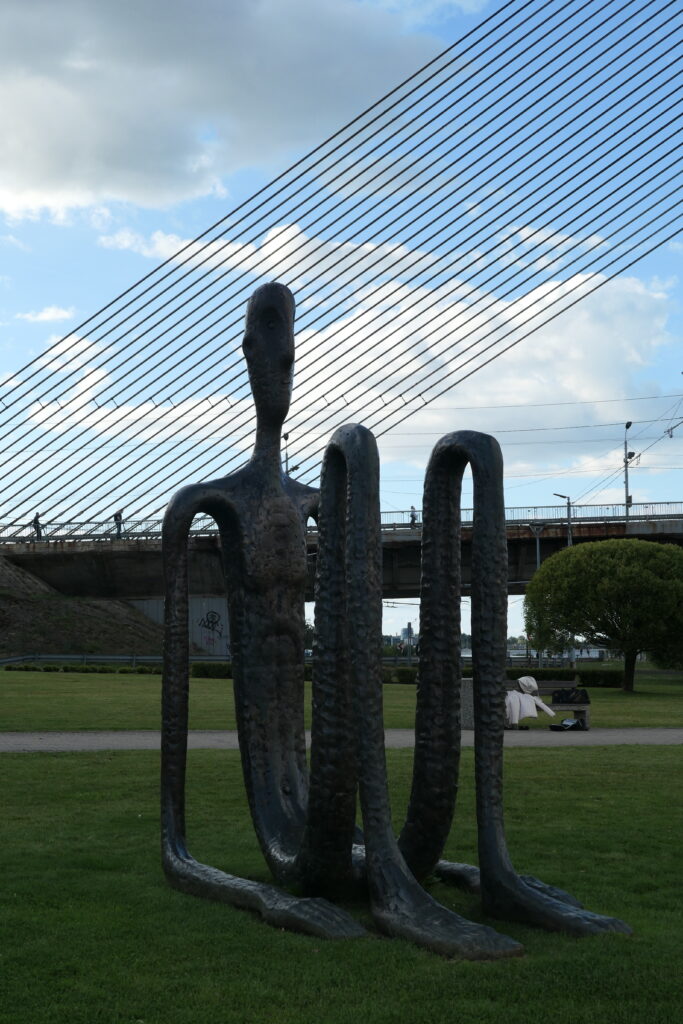
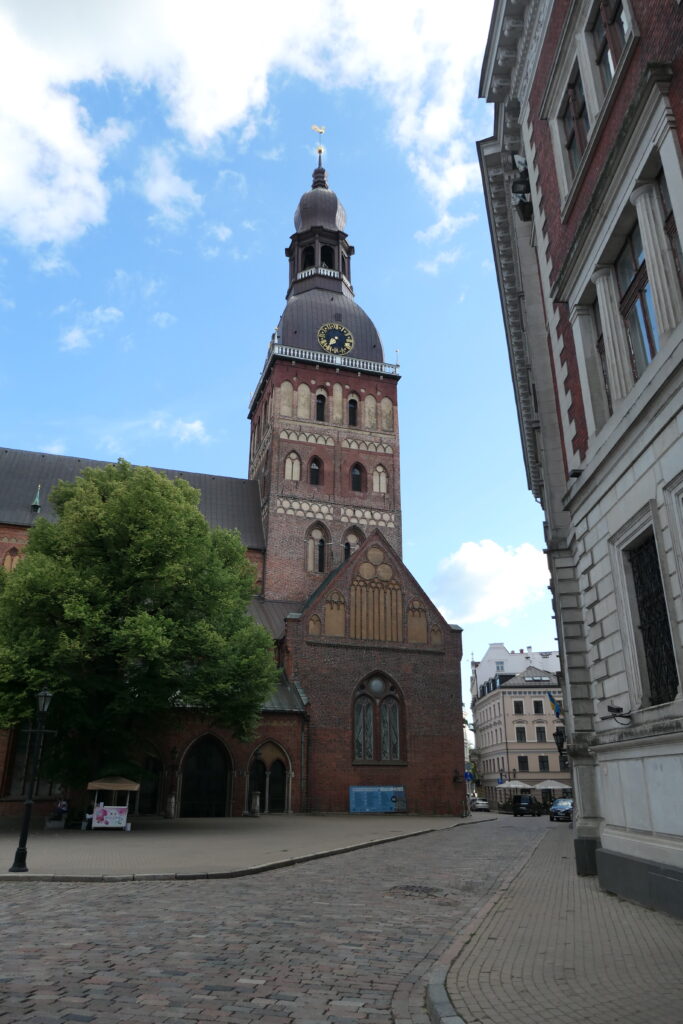
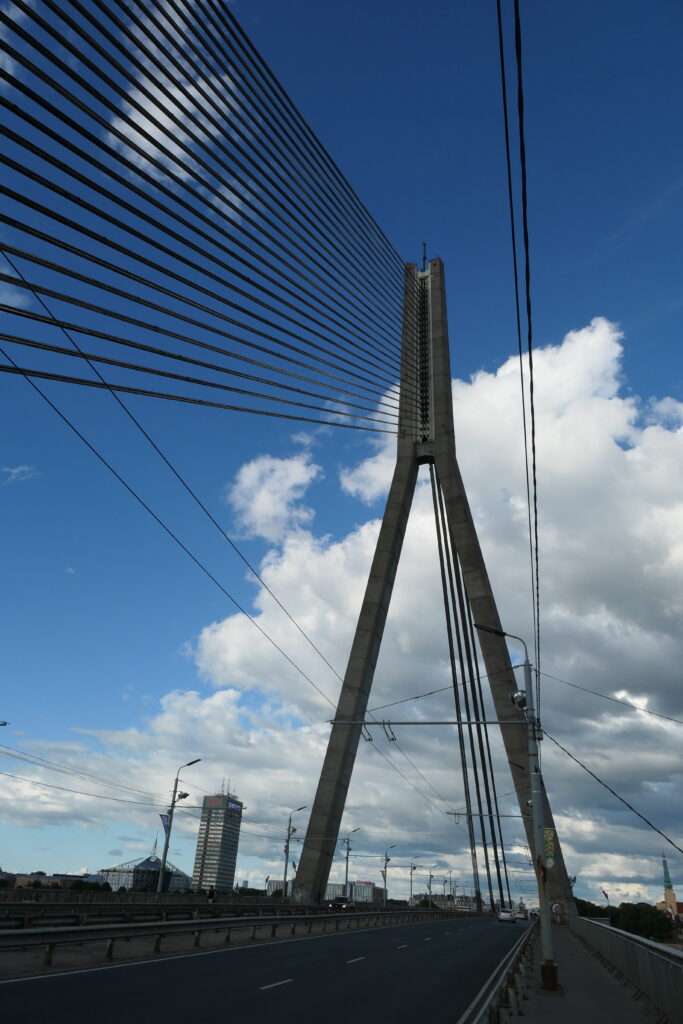
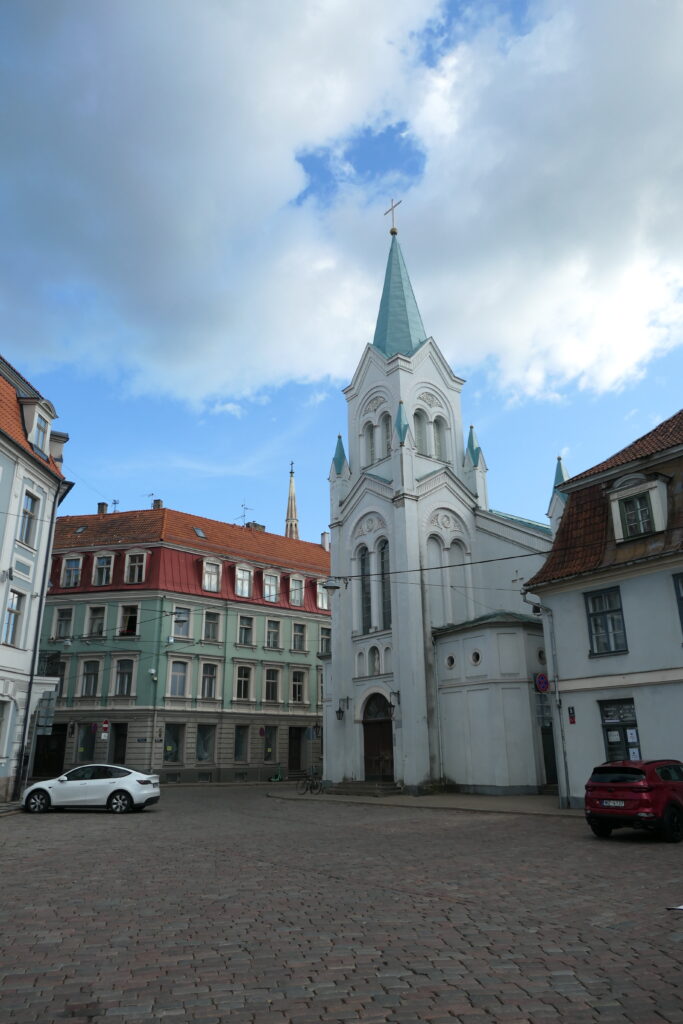
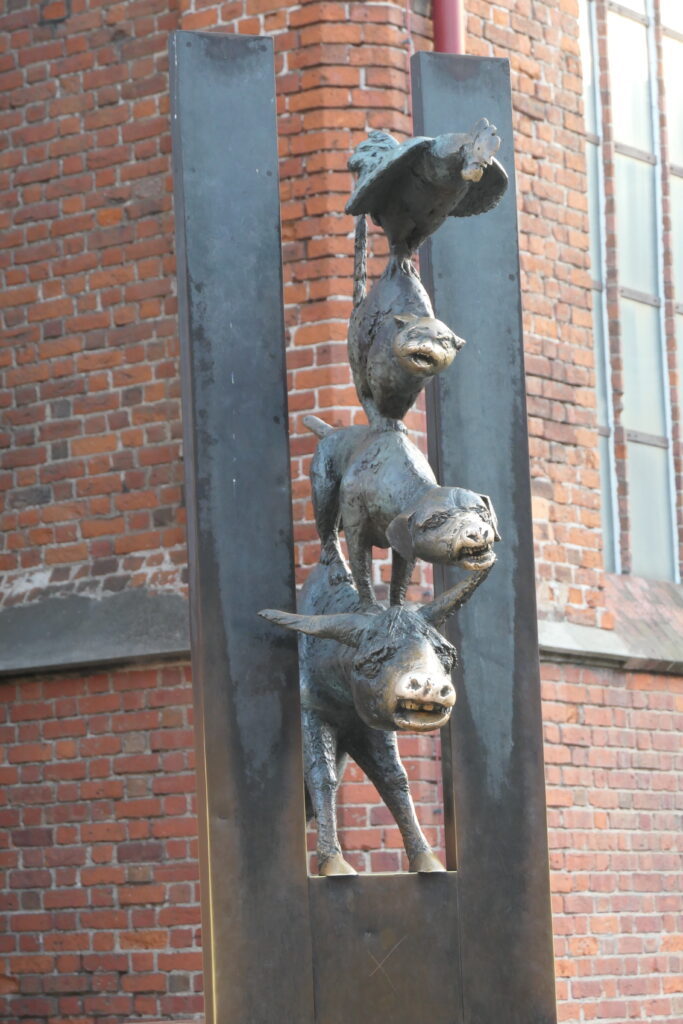
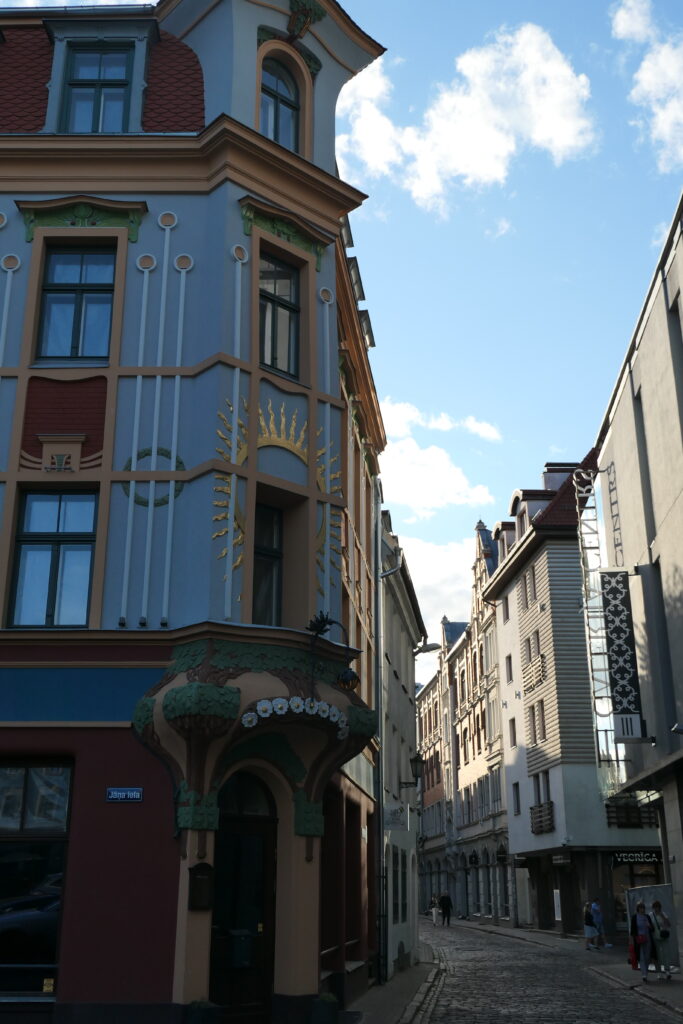
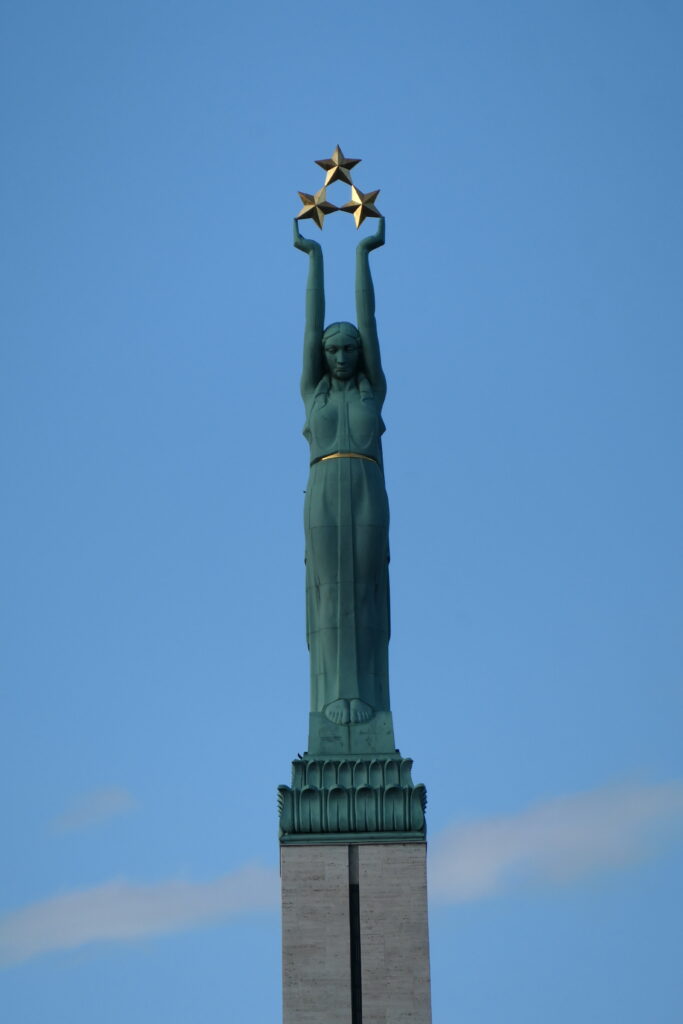
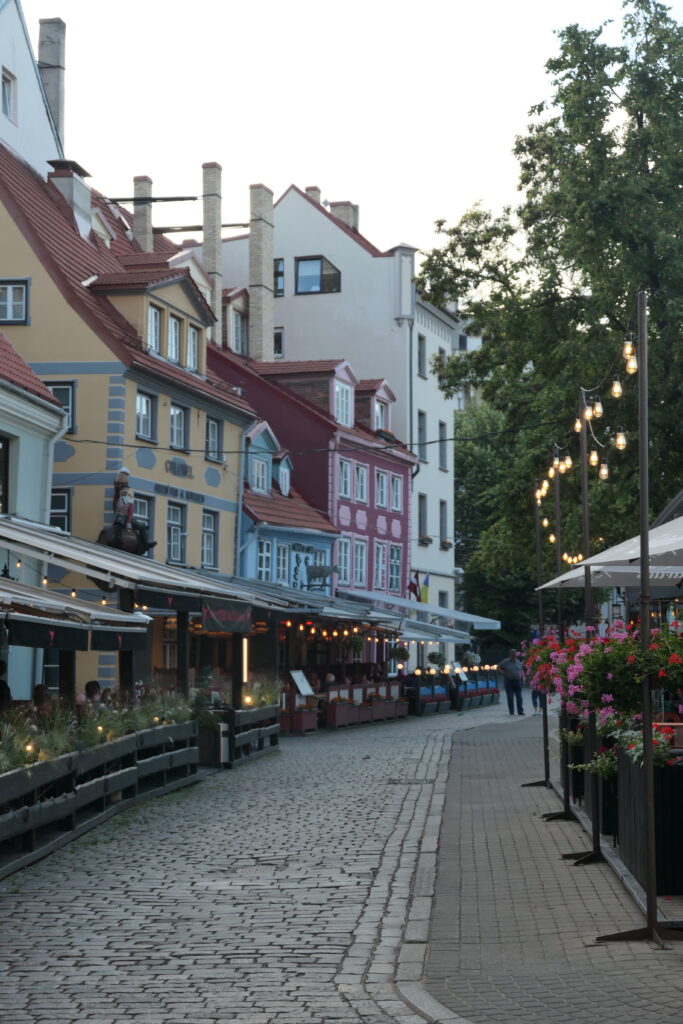
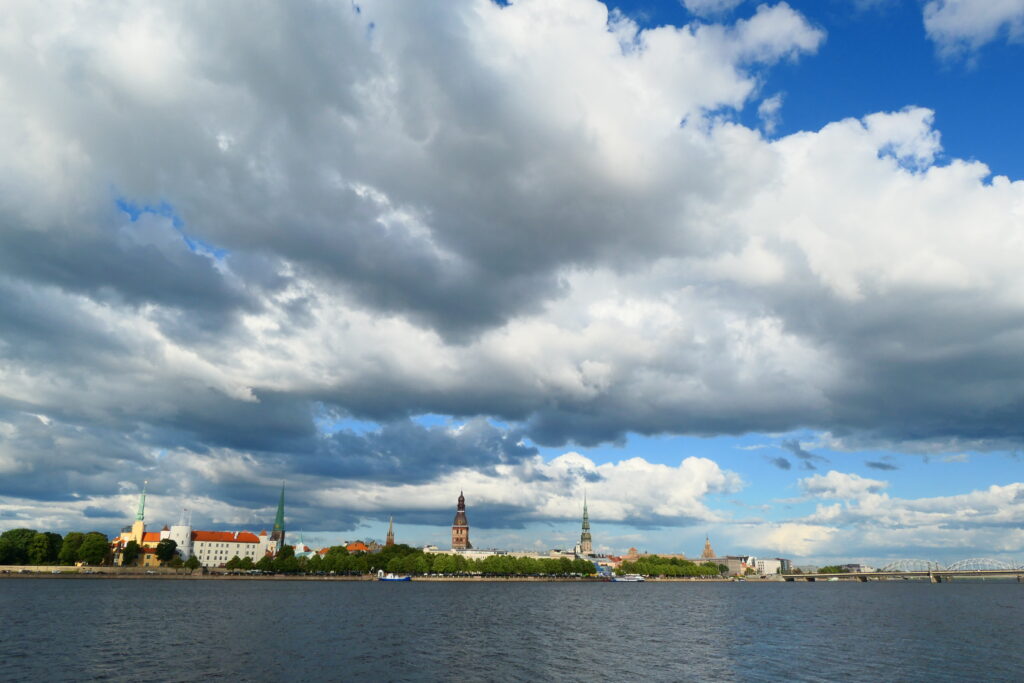
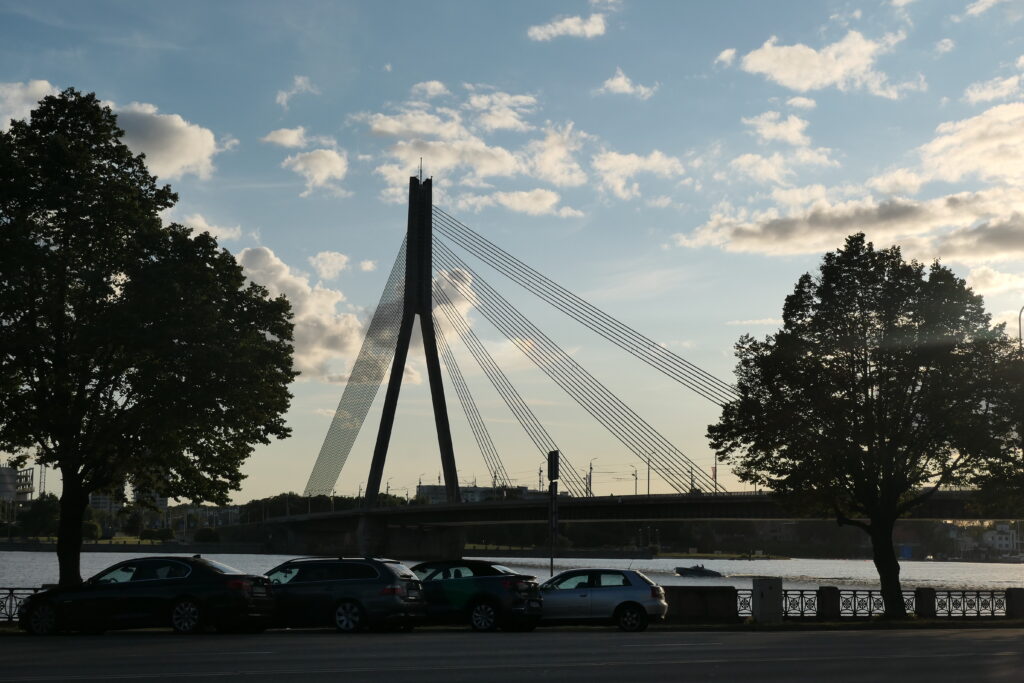
Salacgrīva
Salacgrīva is a small town of around 2,500 people (2024), located in the north west of Latvia along the Gulf of Riga, on the Baltic Sea. It dates back to medieval times, and has always been an important settlement due to its location along the Salaca River. The town’s development accelerated in the 19th century with the establishment of a port and the growth of maritime industries.
It’s known for the Salacgrīva Nature Park, which is great for hiking and birdwatching, as well as the nearby beaches. It also hosts the Positivus Festival, one of the most prominent annual music festivals in Latvia.
We liked the ‘Monument to Milda’, a memorial located between Pärnu and Vilnius streets. The memorial was built in 1986, and is dedicated to sailors lost at sea and Soviet soldiers who died in World War II. It consists of a female mother holding a small baby on her shoulders, created by sculptor Leja Novožeņeca and architect Jānis Pētersons.
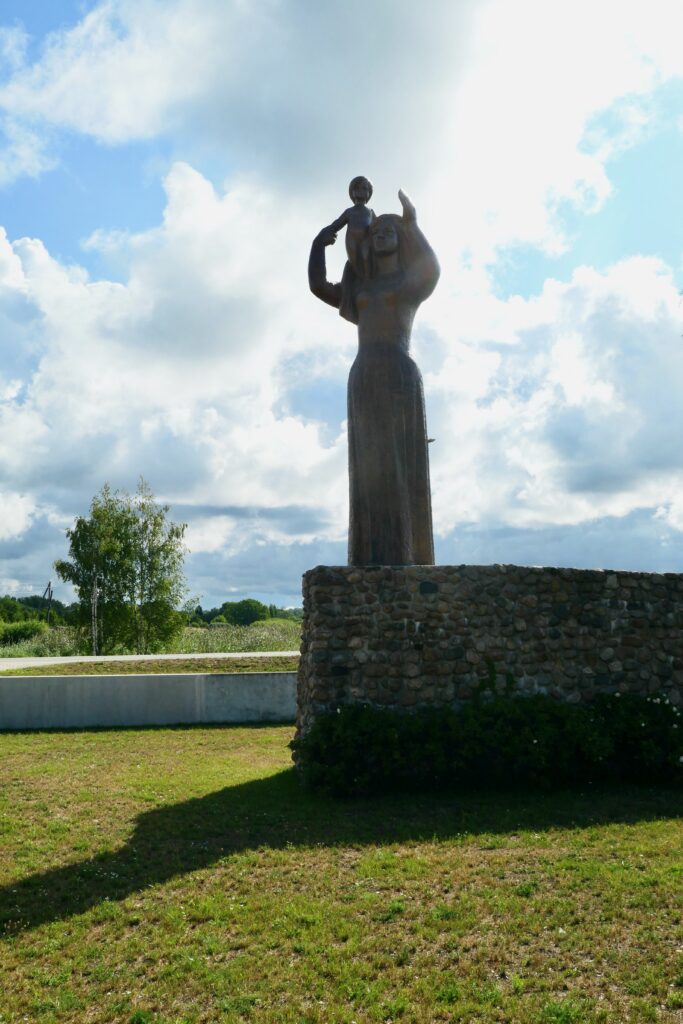
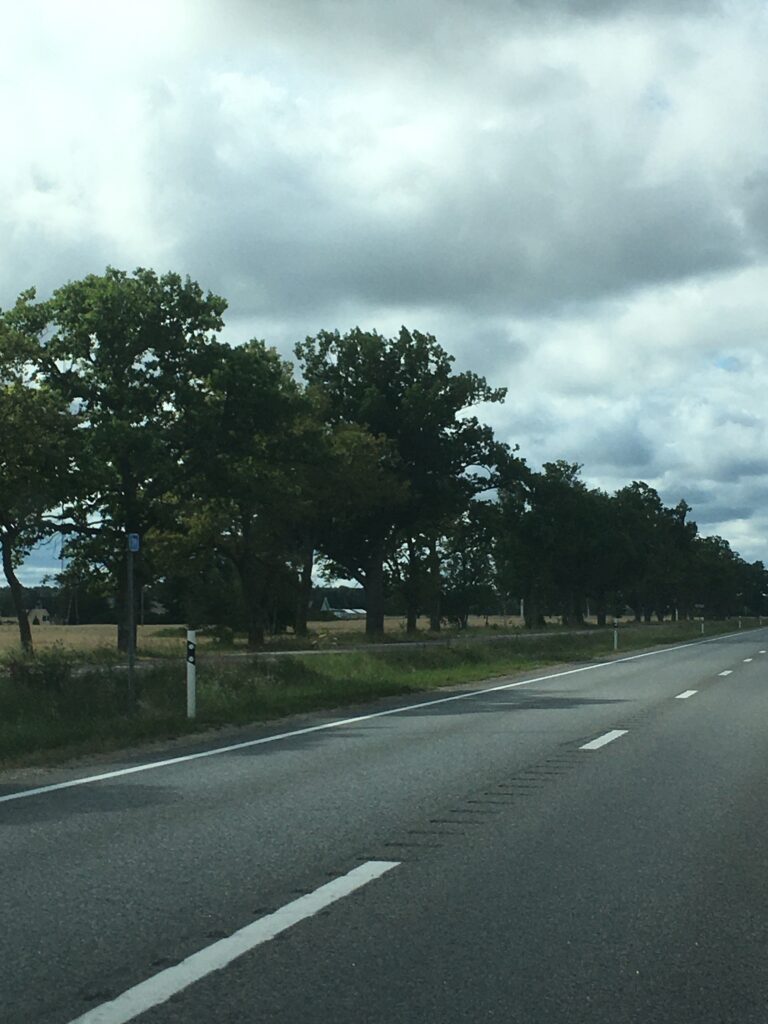
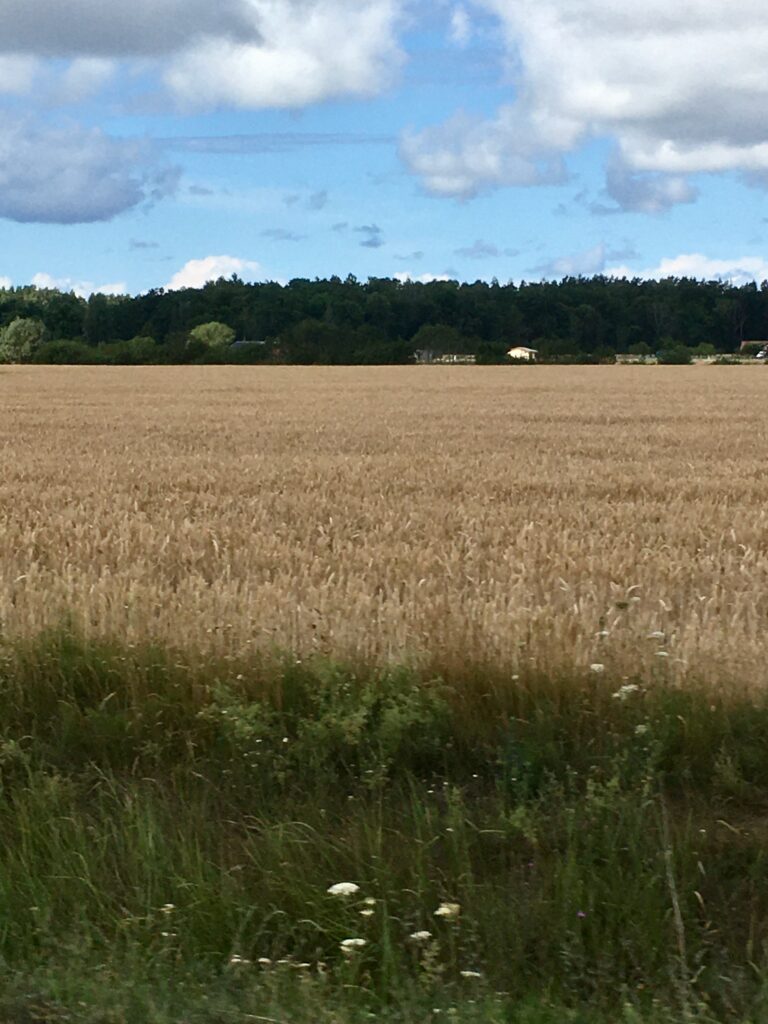
Saulkrasti
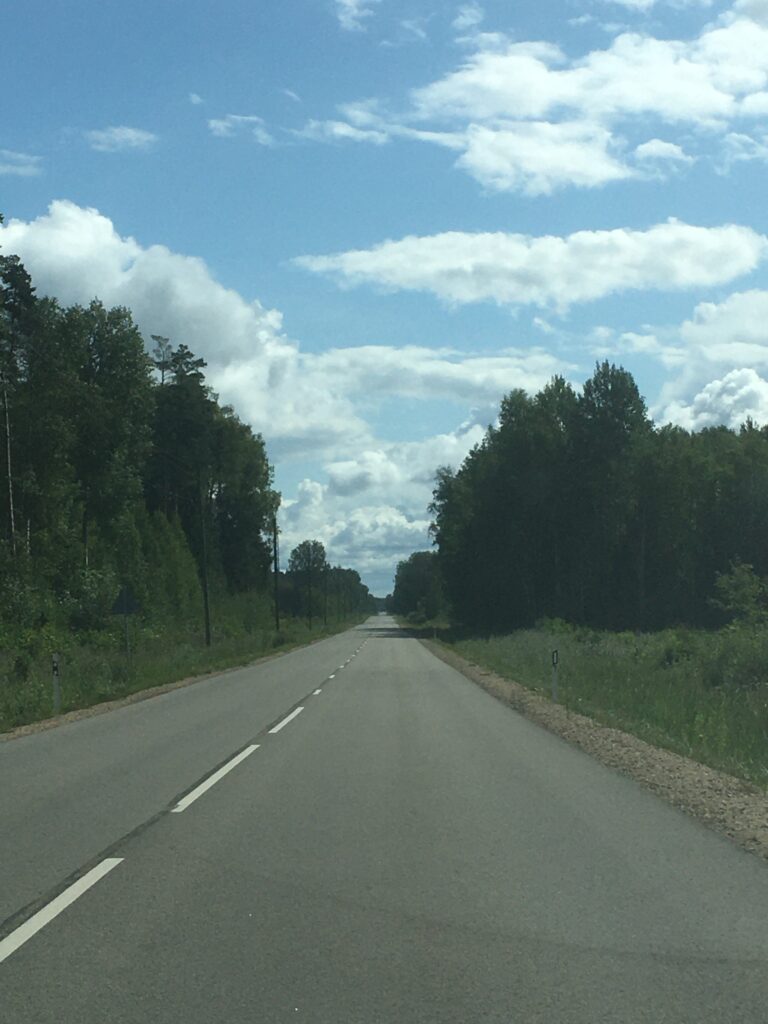
Saulkrasti is a coastal town in Latvia, located along the Gulf of Riga, about 30 Miles (50 km) north of Riga. Known for its picturesque sandy beaches and natural forests, it is a popular summer destination for both locals and tourists. The town is part of the Greater Riga area and has a population of around 3,000.
It reminded us a lot of Sweden and Finland, with its long straight roads with forests either side!
Sigulda
Sigulda is a historic town located in central Latvia, approximately 30 miles(50 km) north east of Riga. With a population of around 15,000 (2024), it’s one of the most popular tourist destinations in Latvia. It’s often referred to as the ‘Switzerland of Latvia’ due to its picturesque landscapes, rolling hills, dense forests, and the meandering Gauja River.
The town is home to the Sigulda Castle, built in the 13th century, and the nearby Turaida Castle, which dates back to the 1200s. Close to Sigulda, there’s also the Gutmanis Cave, the largest cave in the Baltics, with ancient inscriptions carved into its walls.
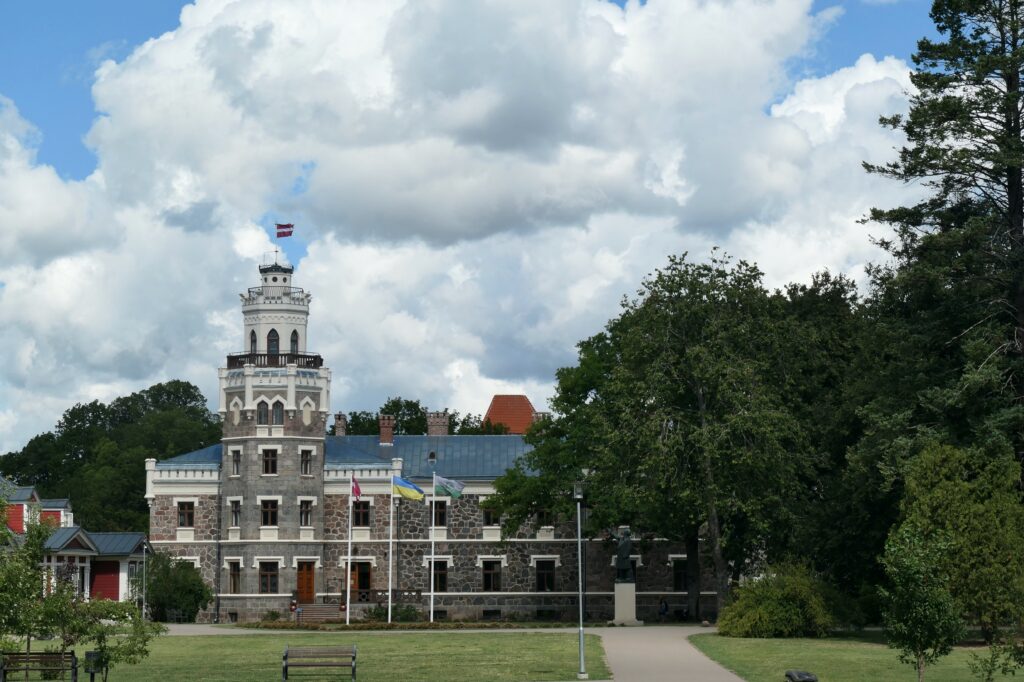
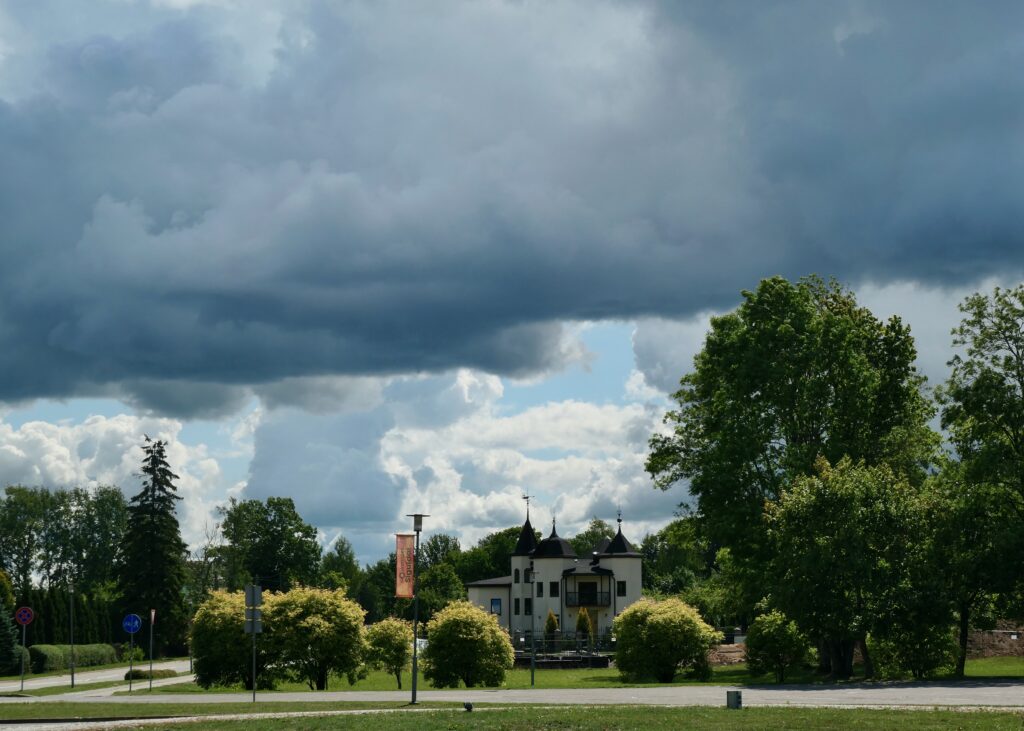
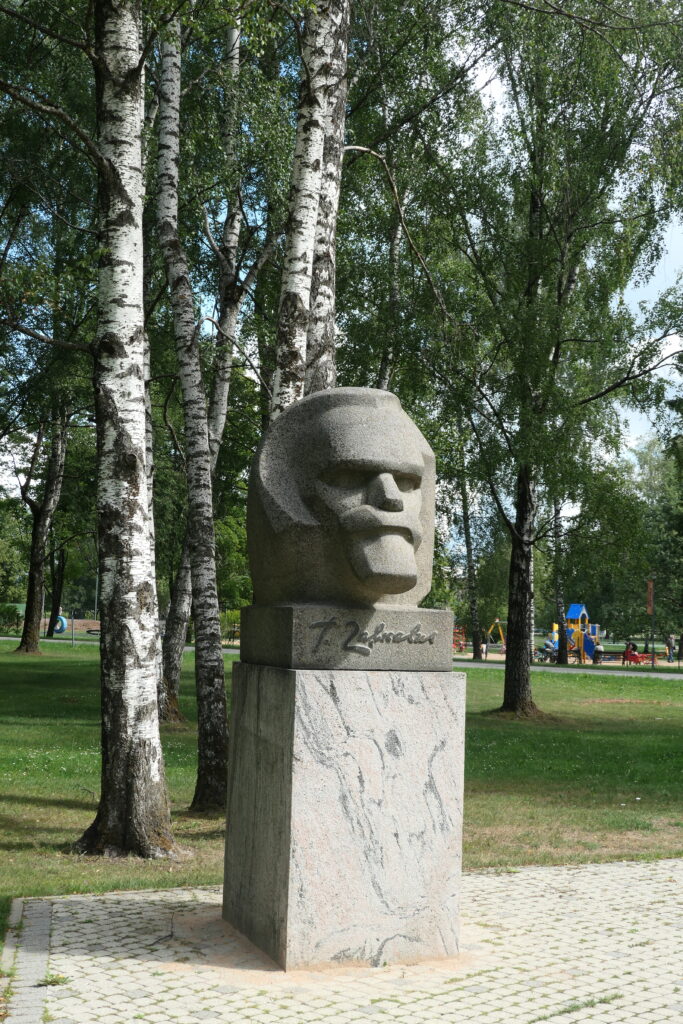
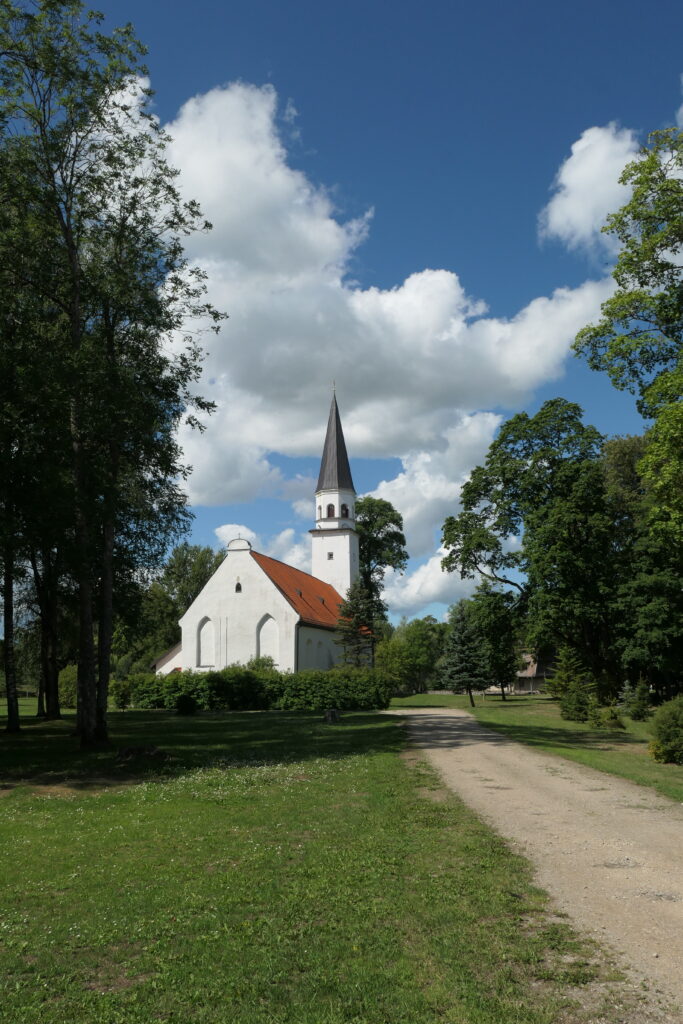
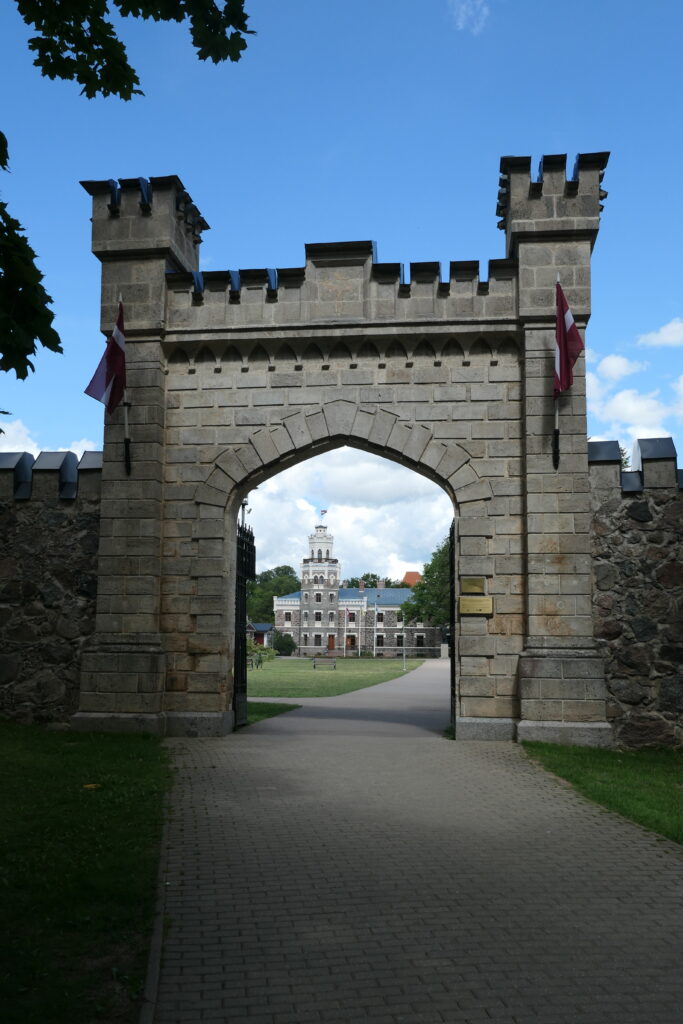
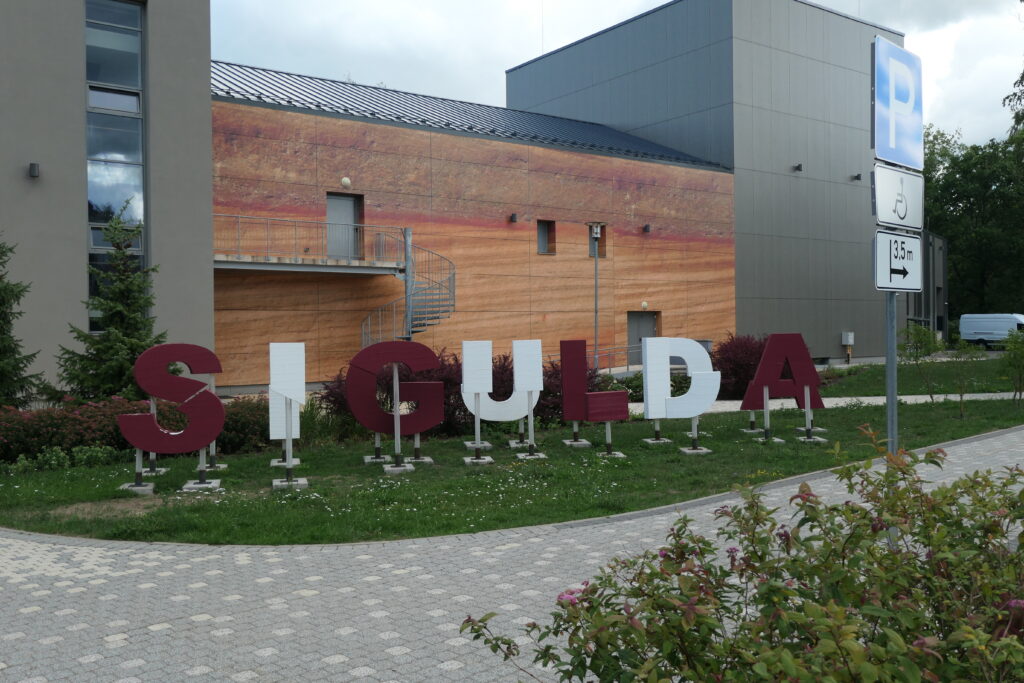
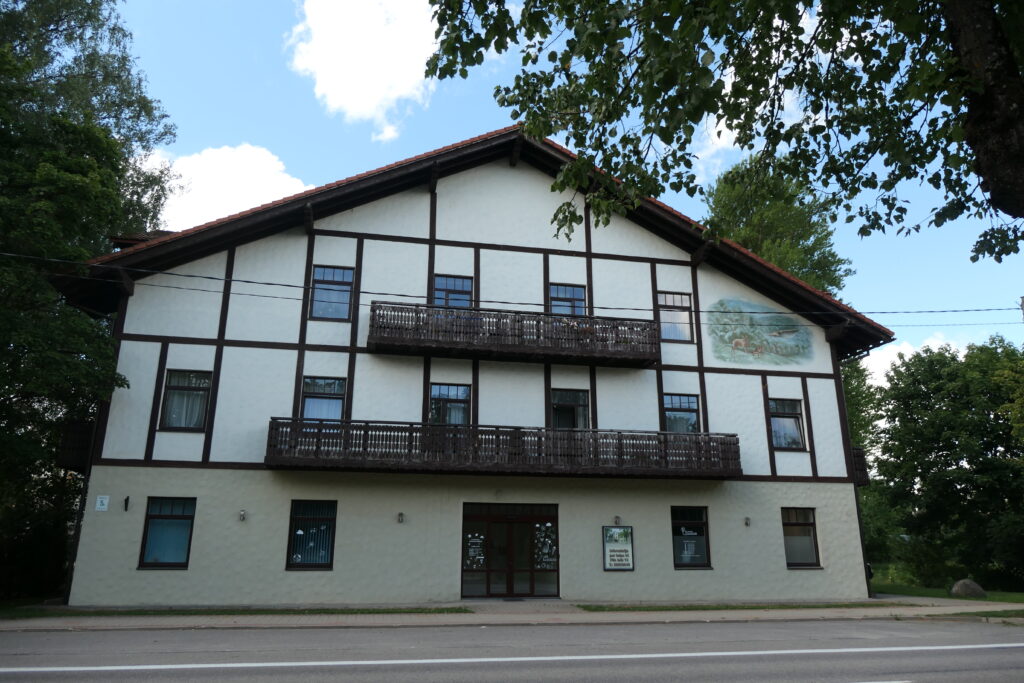
Lake Usma
Lake Usma is a tranquil really well kept lake that’s a mecca for small sailing boats and fishermen! There’s a great atmosphere, and the people are really proud of the area. It’s located in the west of the country, not far from etc coast.
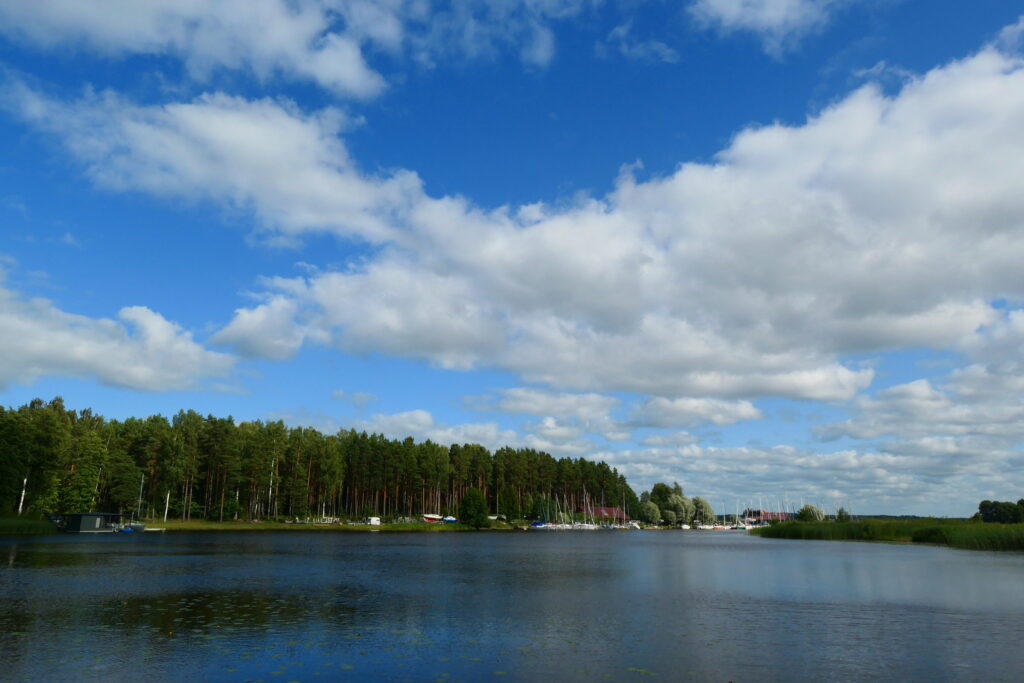
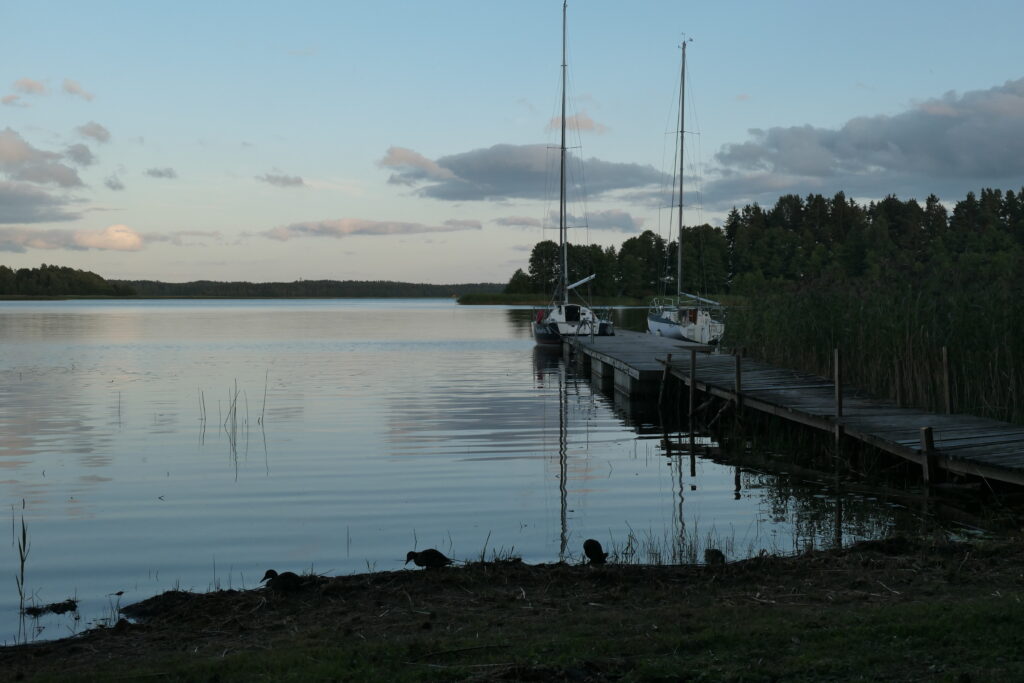
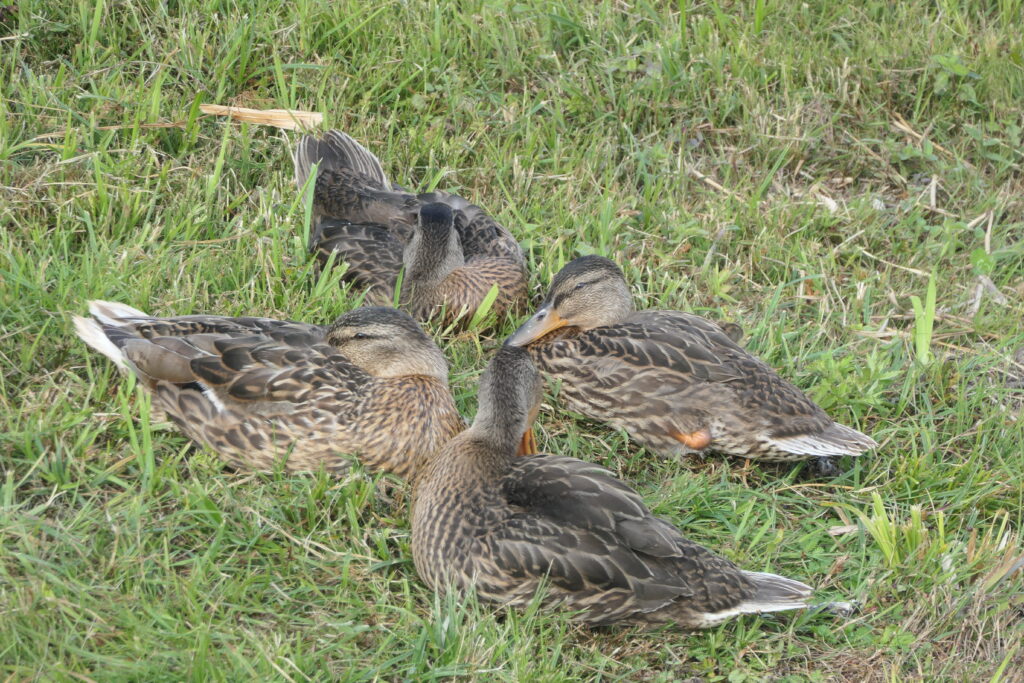
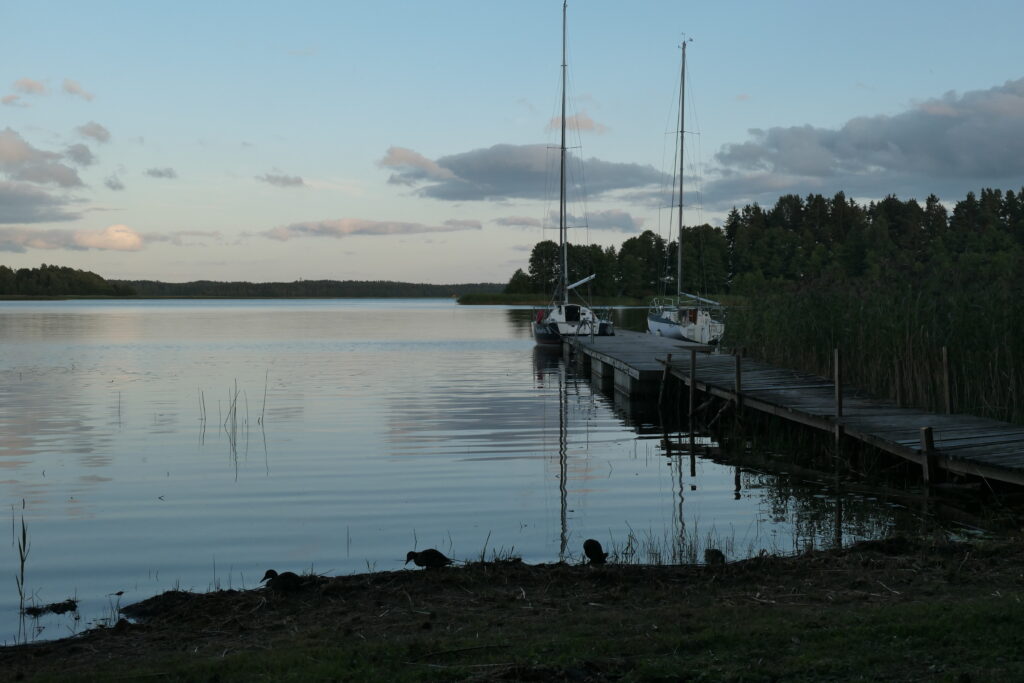
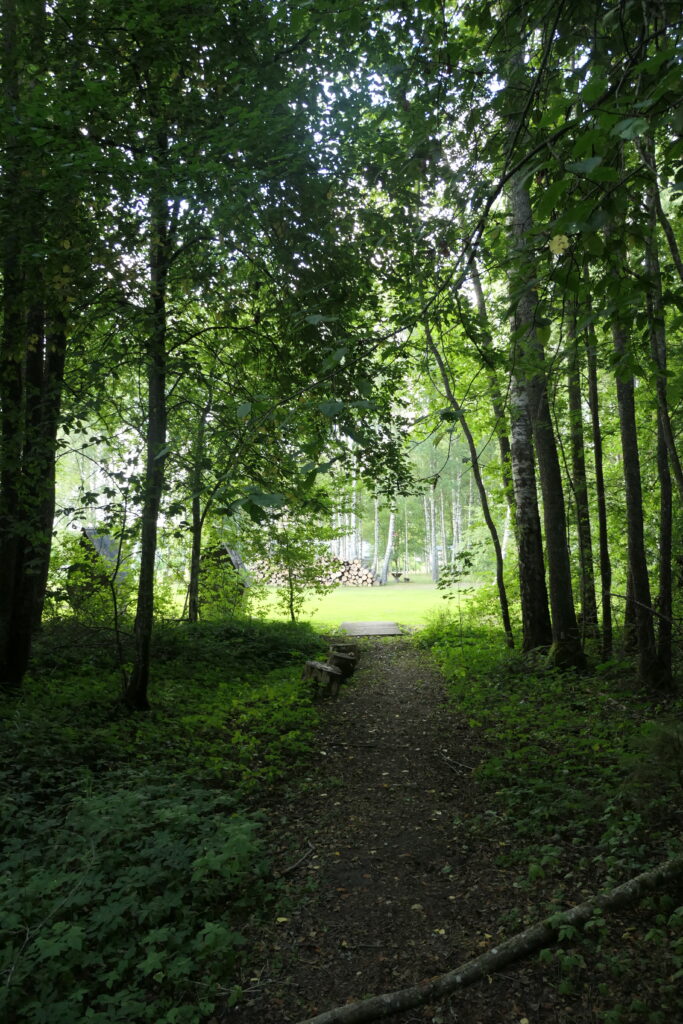
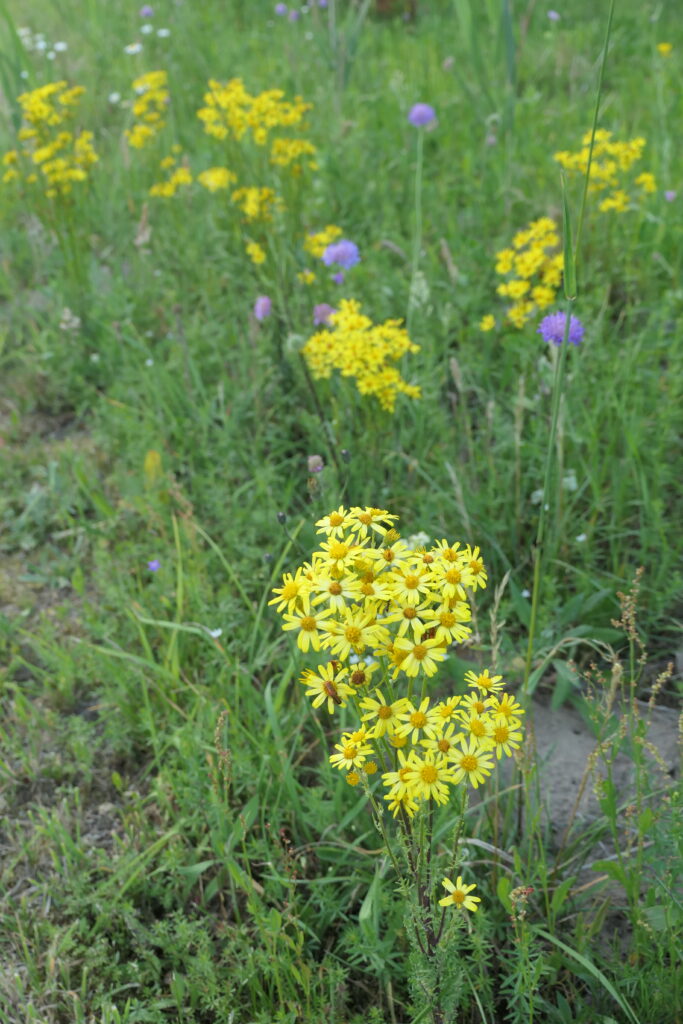
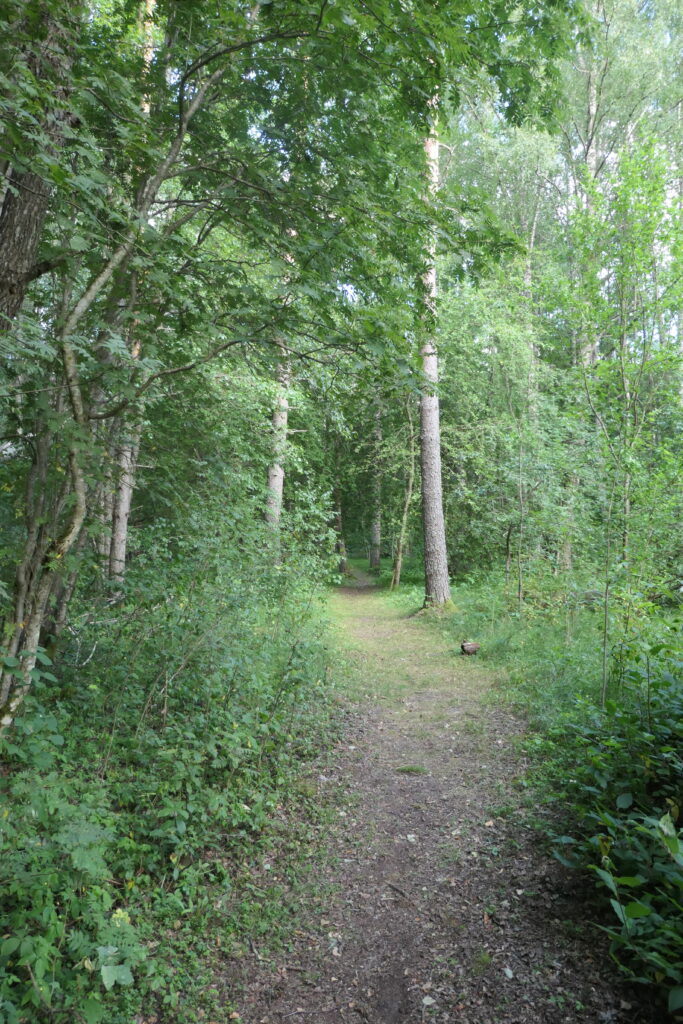
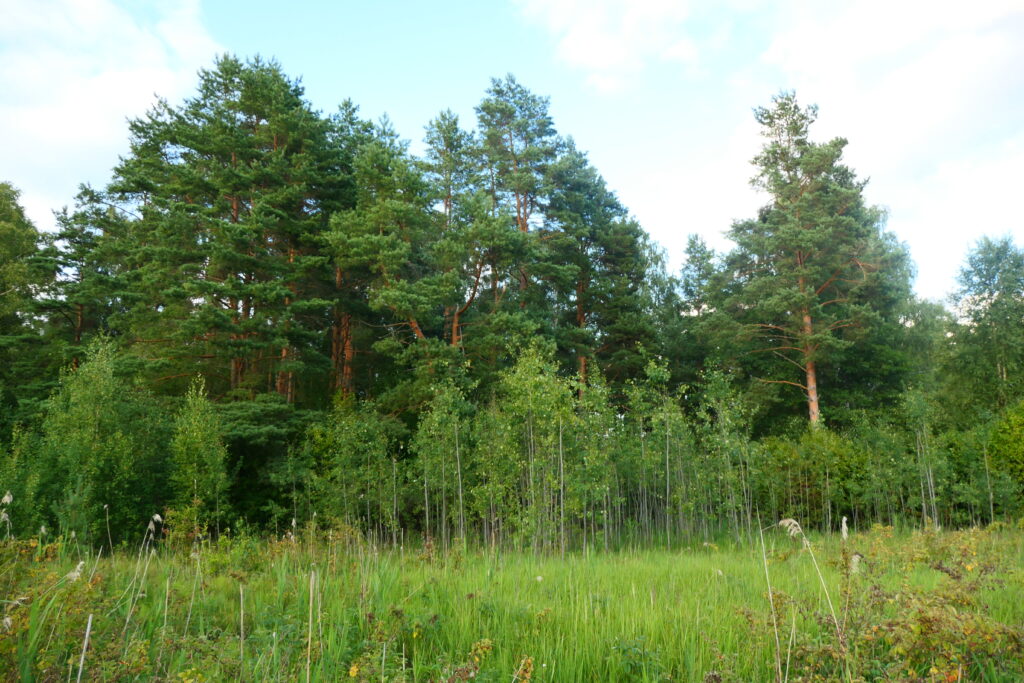
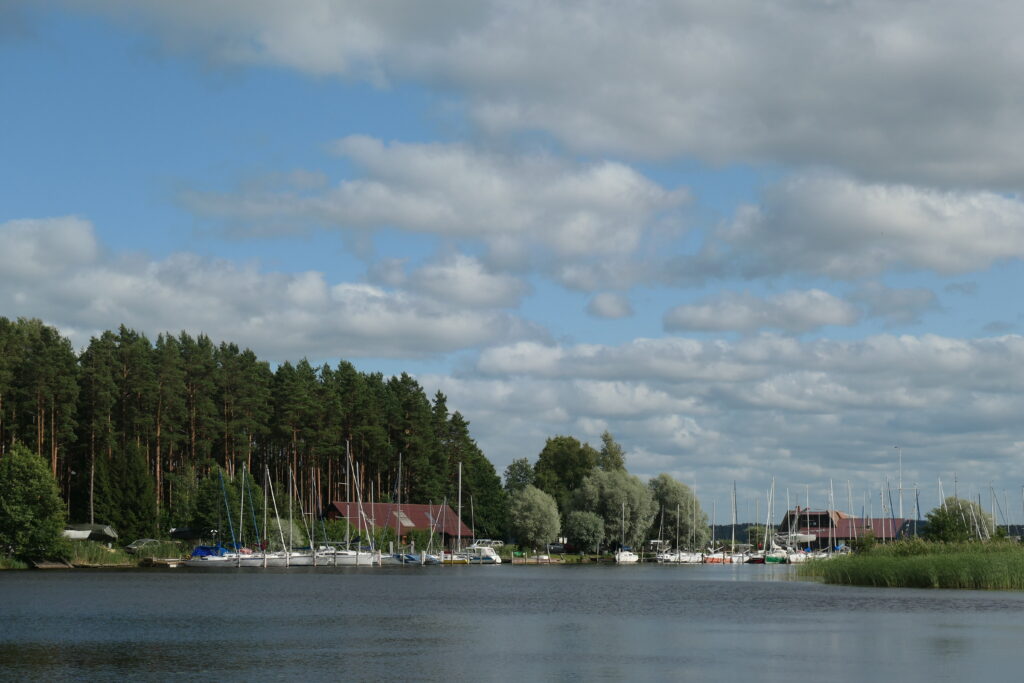
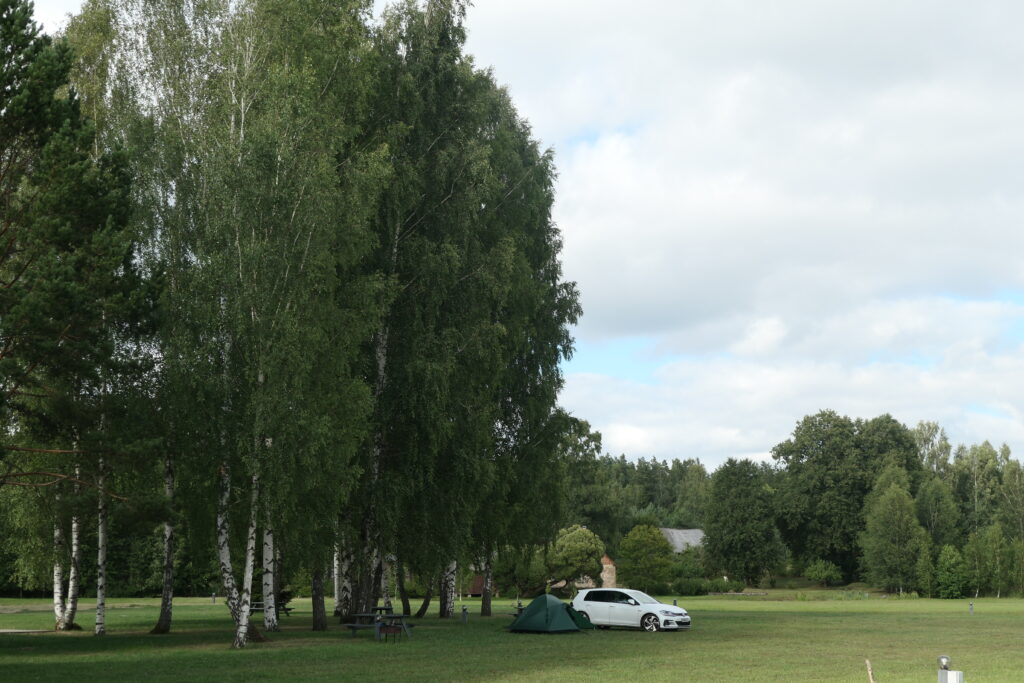
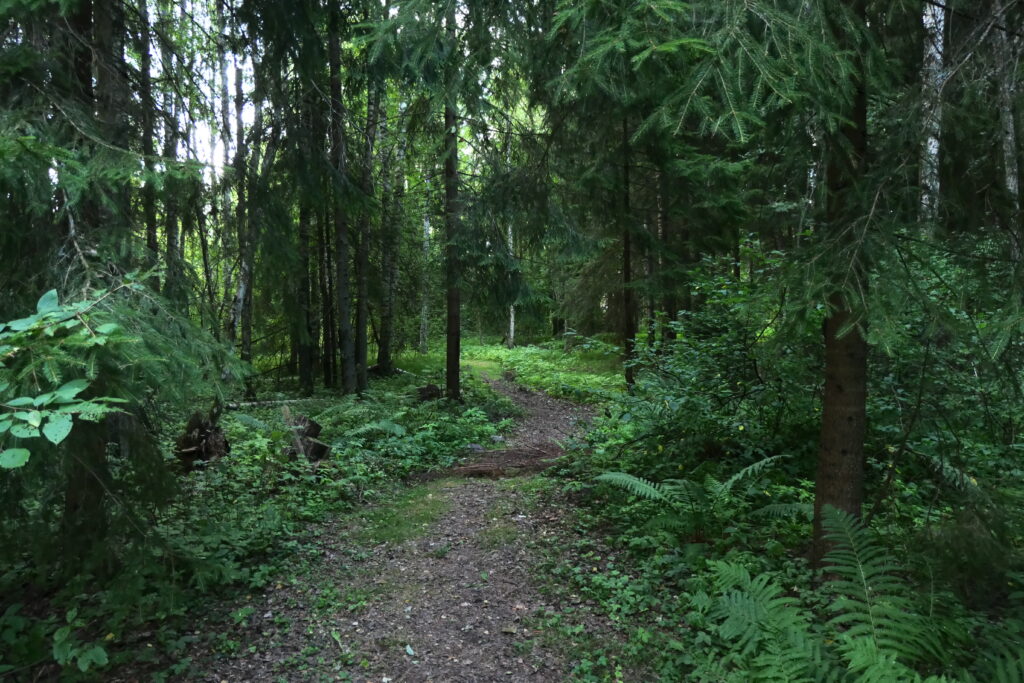
Vaiņode
Vaiņode is a village in south western Latvia, in the Courland region. First being mentioned in 1253, the village grew around a railway station that was established in 1871. One of its key historical features is the Vaiņode Air Base, which was initially built by the German Navy during World War I as an airship station. The base later served multiple military powers, including the Latvian Army, Nazi Germany during WWII, and the Soviet Union during its occupation. Today, remnants of the airfield, including Soviet-era hangars and runways, still exist.
We stayed in a large house that was being renovated for a few days whilst the rain endlessly poured and poured! The owner was friendly, although it’s such a huge project, we questioned whether the house will ever be fully renovated!
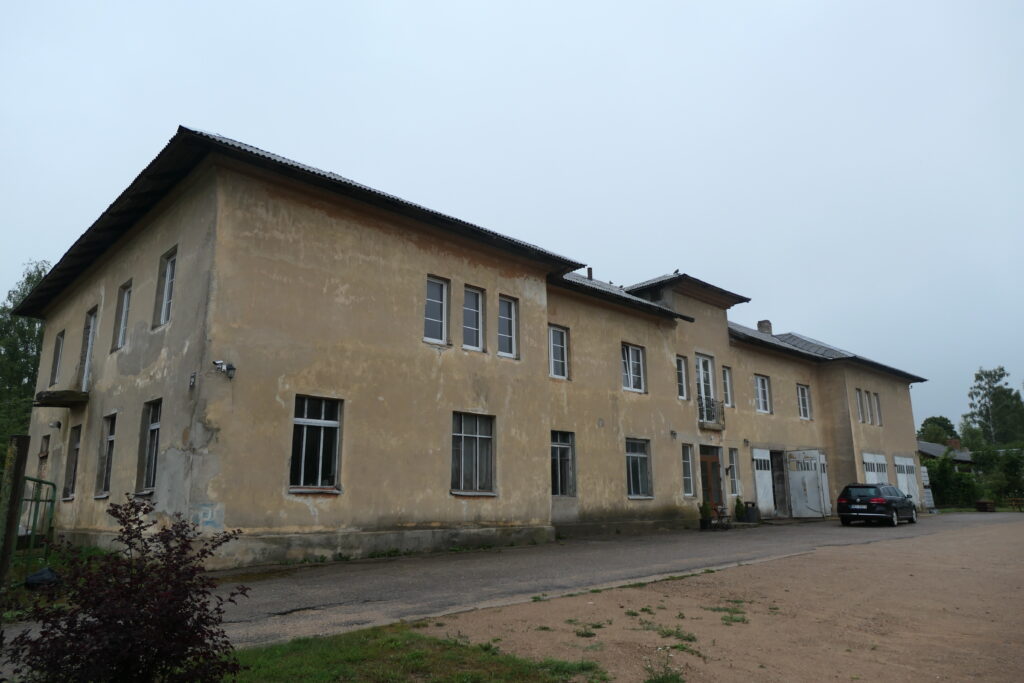
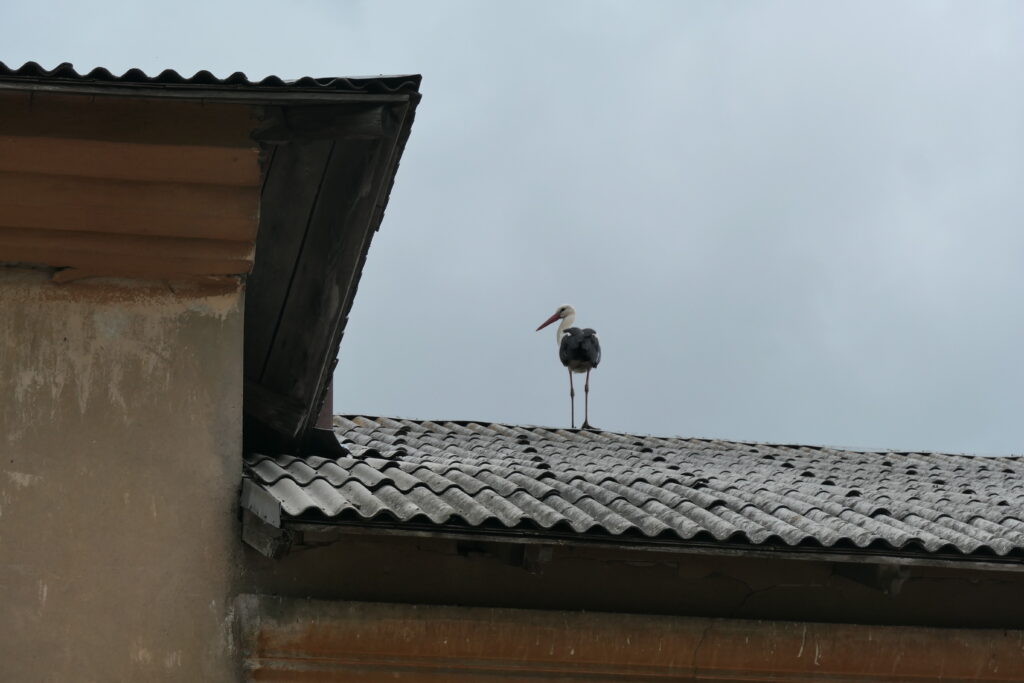
Ventspils
Ventspils is a port city located on the western coast of Latvia, along the Baltic Sea. With a population of approximately 35,000, it is one of Latvia’s major cities and an important industrial and commercial centre. The city is best known for its deep-water port, which plays a crucial role in Latvia’s economy by handling cargo and supporting maritime trade. When we visited you could hear the enormous banging coming from the cargo transporters loading coal.
Its roots date back to the 13th century, built around Ventspils Castle, and the 19th-century Seamen’s Gate. Nowadays, the city has a well developed promenade along its coastline, with sandy beaches, parks, and outdoor sports areas, making it a popular summer destination. There are also many cow statues and sculptures in the city, which can make an interesting walk.
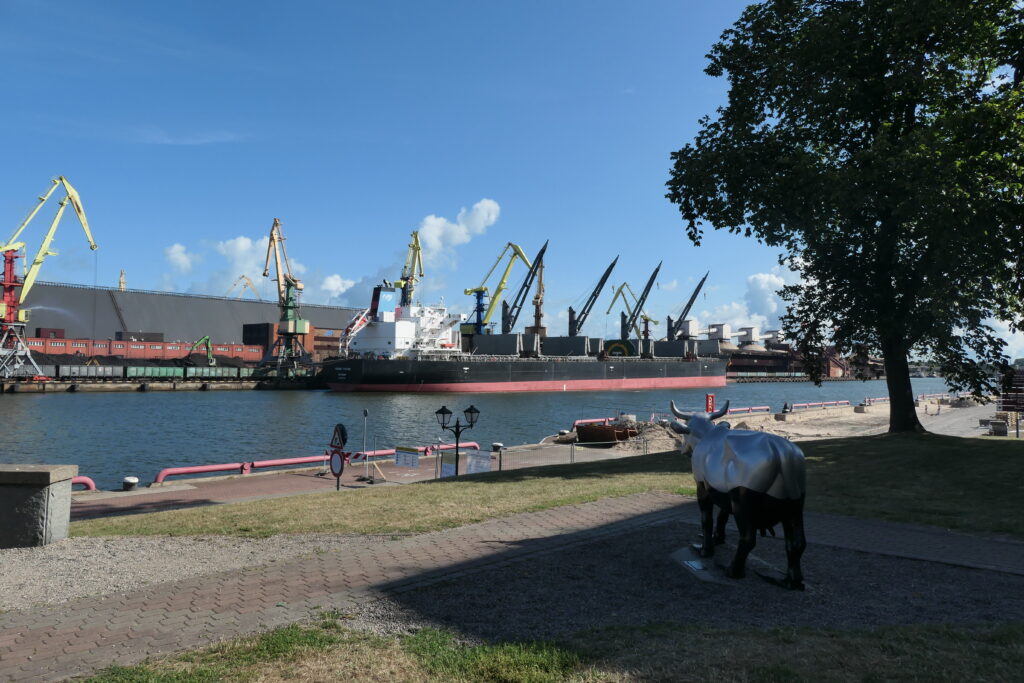
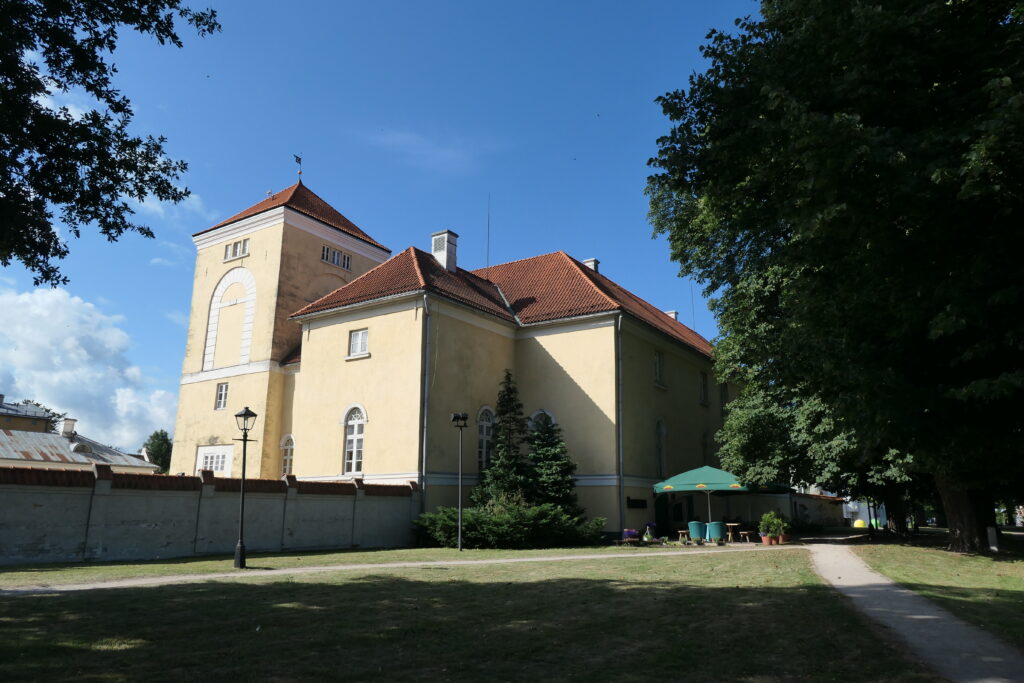
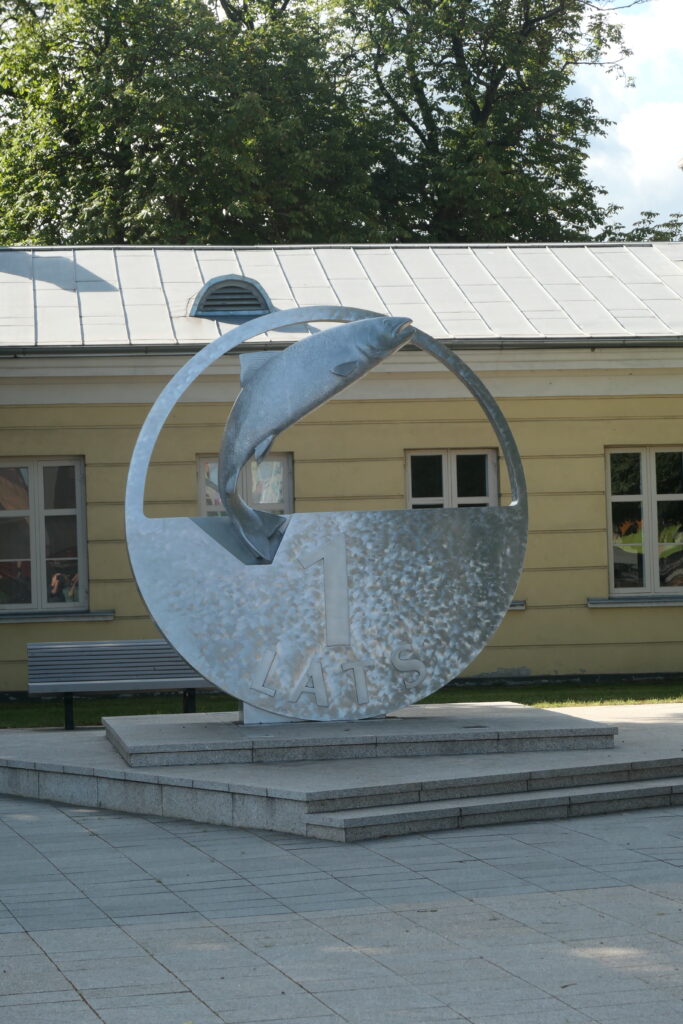
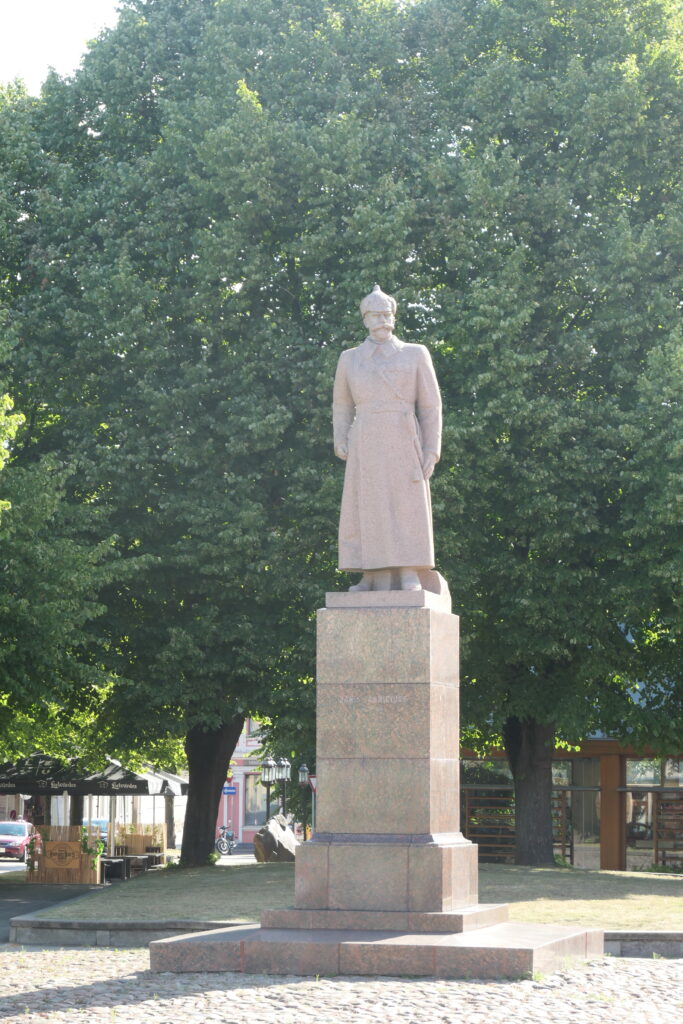
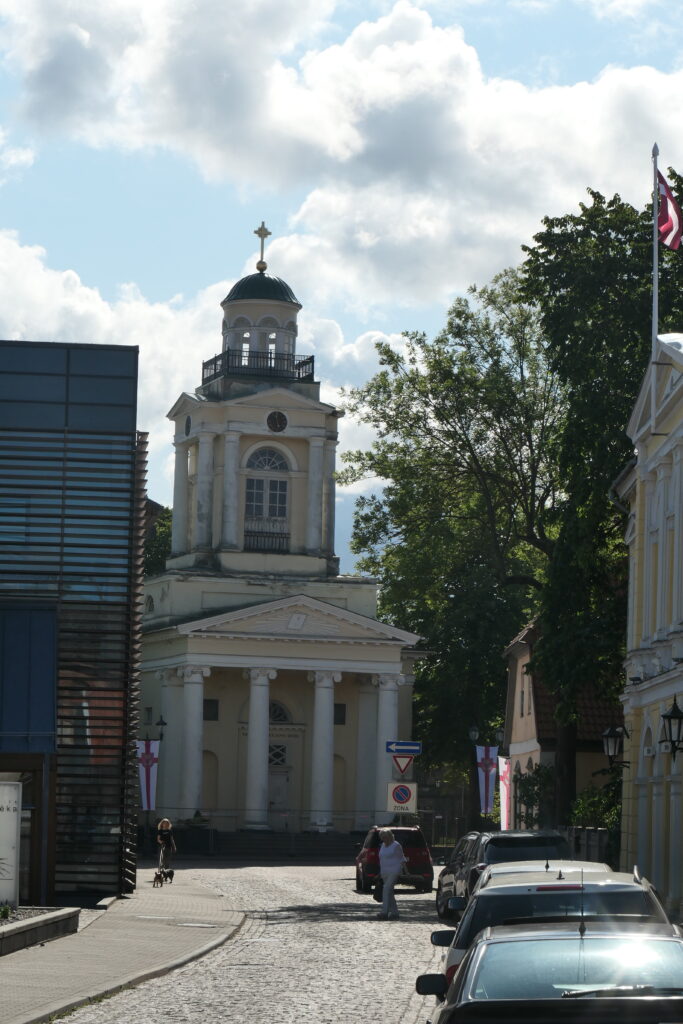
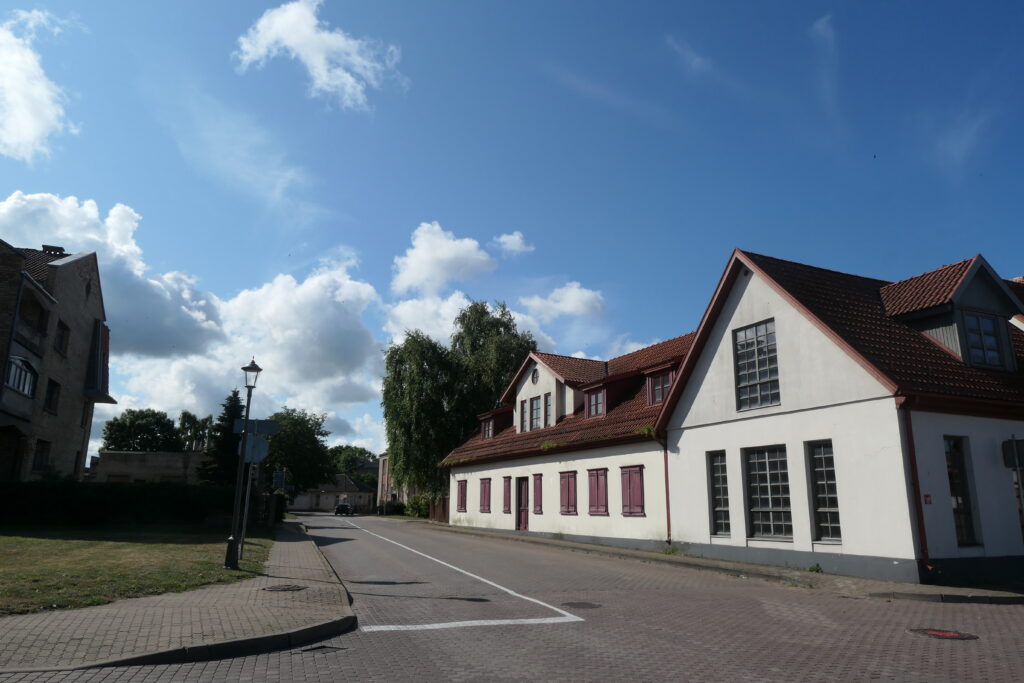
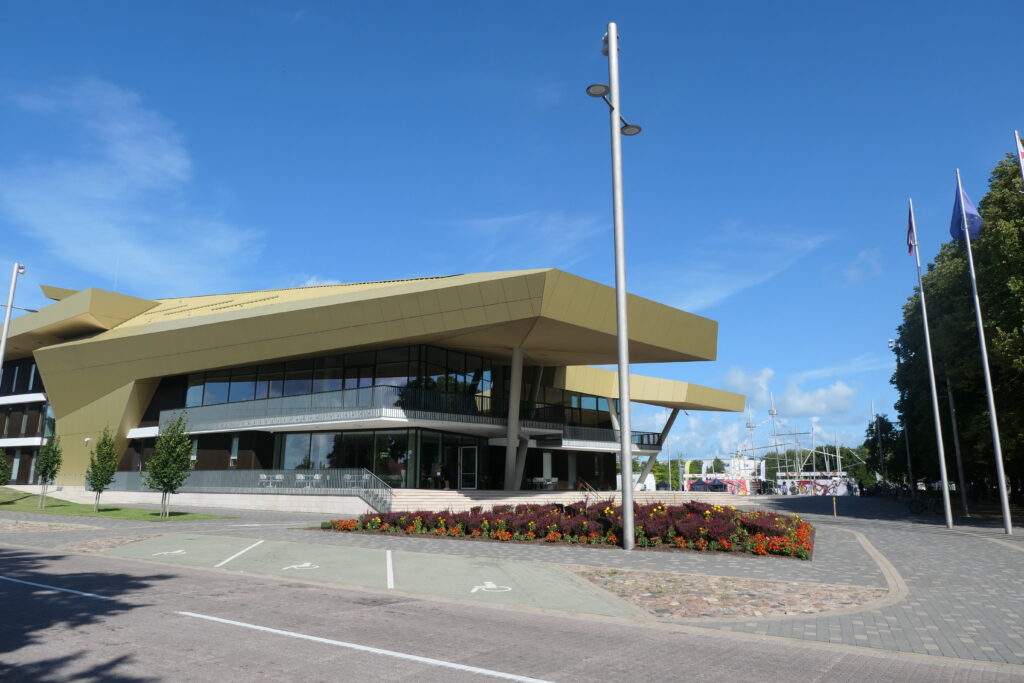
Vitrupe Beach
There’s a lovely beach right on the main road where the sea and the road meet called Vitrupe beach. A super natural and isolated beach – well worth the trip! It’s 1¼ miles (2 km) long and located close to a tiny village called Vitrupe, on the north centra coast, not far from the border with Estonia.
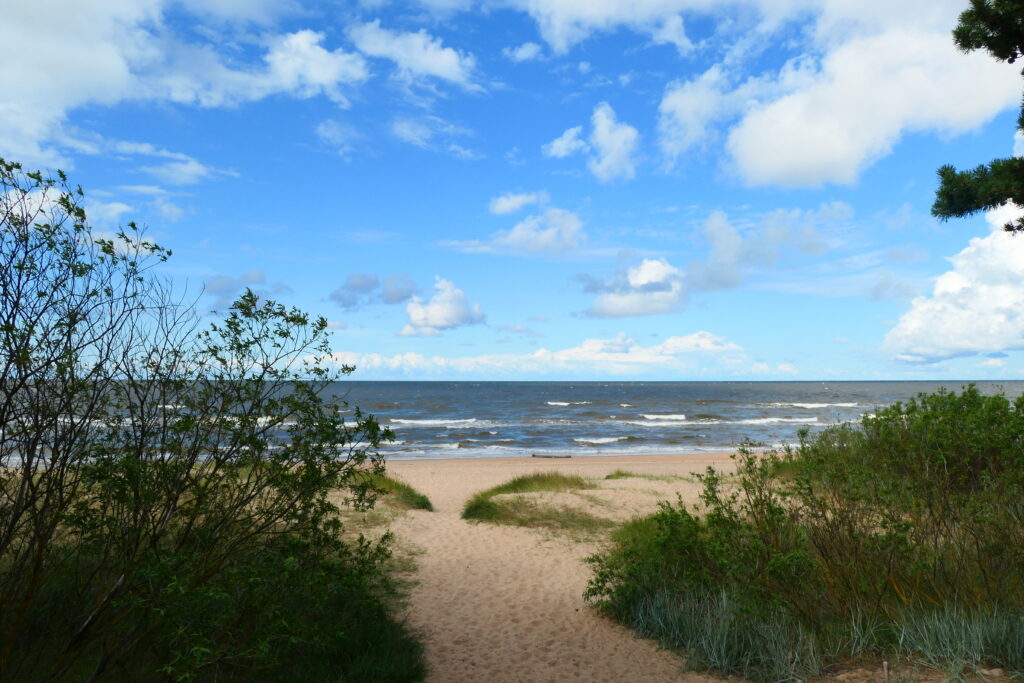
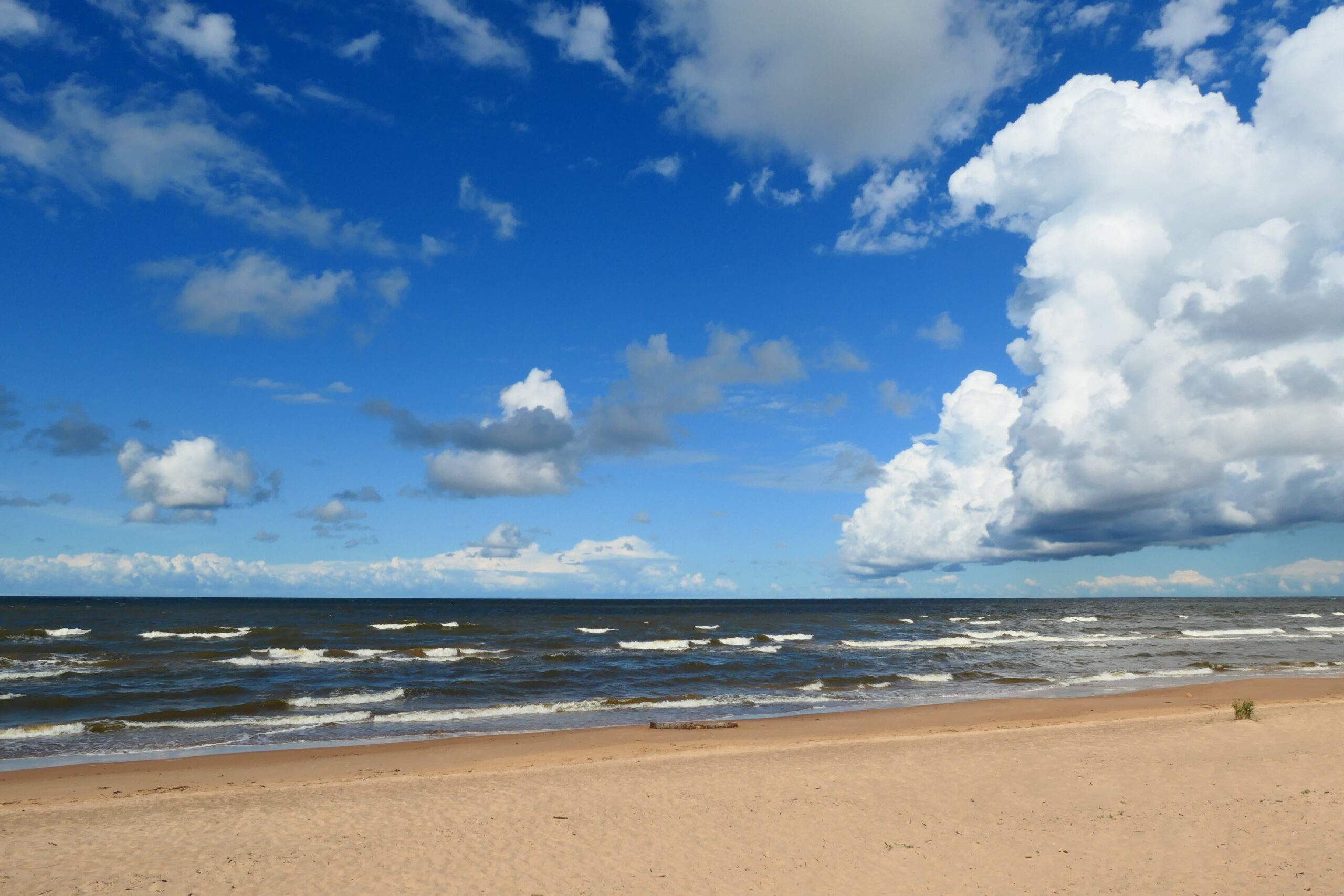
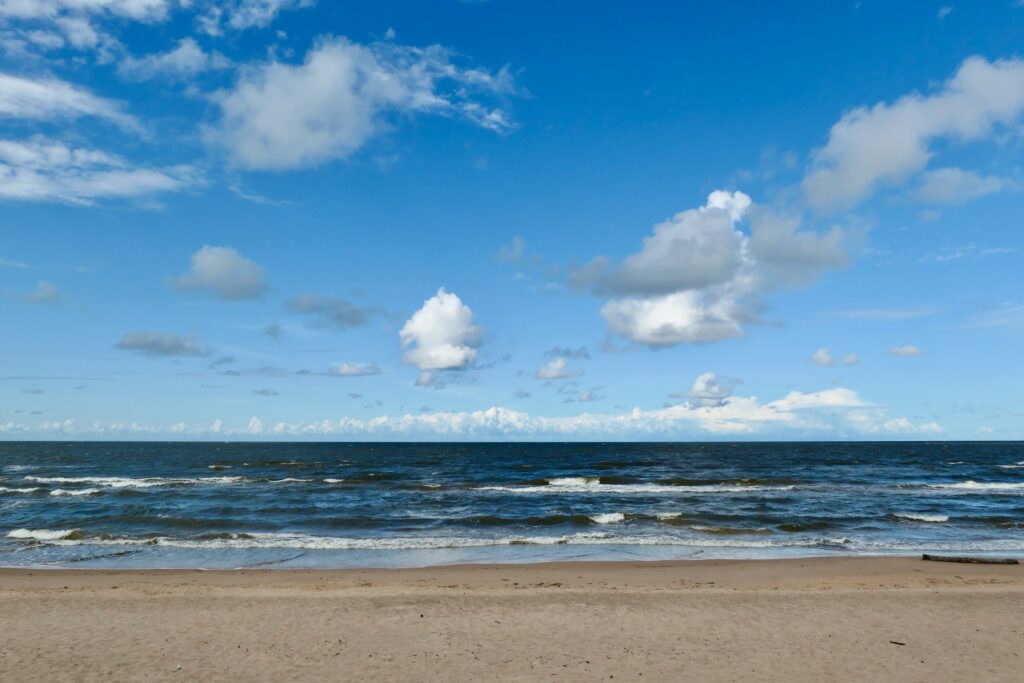
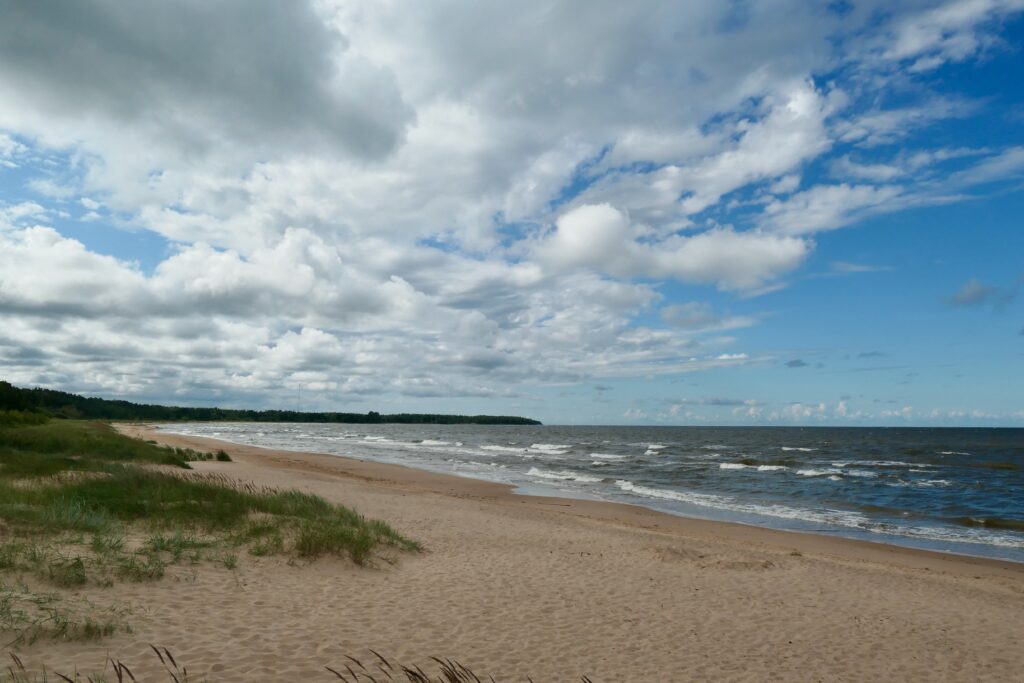
What’s it like to drive in Latvia?
As with almost everywhere on the continent of Europe, they drive on the right hand side of the road in Latvia.
As a whole Latvian drivers must be some of the most impatient drivers in Europe! They love to race up behind you – even though you’re at the speed limit – then hover a foot (30 cm) behind you, before racing off again – despite there being too little space to do so – putting everyone else in mortal peril! The only time they slow down is when there’s a speed camera – before launching off again at the earliest opportunity! Goodness knows what important events they all have to get to!
We found the best thing to do was relax, and let them get on with it! They’re soon gone. They’re like the opposite of Norweigans!
Do you require an international driving permit in Latvia?
We’ve created a dedicated page to driving abroad, which answers this question, and more, which you might find helpful.
Can you use your UK driving license when driving through Latvia?
We’ve created a dedicated page to driving abroad, which answers this question, and more, which you might find helpful.
Do I need a carnet de passages to drive in Latvia?
We’ve created a dedicated page to driving abroad, which answers this question, and more, which you might find helpful.
What are the speed limits in Latvia?
The speed limits for cars in Latvia are:
- 30 mph (50 km/h) for urban driving
- 55 mph (90 km/h) outside of built up areas
- 55 mph (90 km/h) on dual carriageways
- 60 mph (100 km/h) on motorways
What currency do they use in Latvia?
In Lithuania they use the Euro. The use of credit / debit cards is now widespread. Travellers cheques are accepted. There are lots of ATMs.
You should make yourself aware of the amount that your bank charges you for using credit and debit cards abroad. Often credit cards are cheaper for purchasing items directly, and for withdrawing cash from ATMs.
What language do they speak in Latvia?
They speak Latvian in Latvia, although 2 in 5 speak Russian as their mother tongue. English is only spoken in tourist areas. We found that many outside of tourist areas do not speak English, and in fact they take offence if you don’t speak Latvian.
What time zone is Latvia in?
Remember, when you’re planning your next trip to take a look at what time zone it’s in.
Do I need a visa to visit Latvia?
We’ve created a dedicated, more comprehensive page on visas, which you should find helpful. Check it out!
Is wild camping legal in Latvia?
Yes, wild camping is fine in Latvia, although you should avoid national parks and natural reserves.
What plug / socket type do they use in Latvia?

In Latvia they use plug / socket type F.
Health issues in Latvia
Is it safe to drink water in Latvia?
Yes, it is safe to drink tap water in Latvia. Bottled water is also readily available across the country.
What vaccinations are required for Latvia?
This NHS website is kept up to date with all relevant information on vaccinations in Latvia.
Phones in Latvia
What is the country calling code for Latvia?
The country calling code for Latvia is +371
What are the emergency phone numbers in Latvia?
- The emergency number for police in Latvia is: 112
- In Latvia, the emergency number for ambulance is: 112
- The emergency number for fire in Latvia is: 112
If you’ve got some useful info that you’d like to share, let us know!
Don’t forget to check out all the other pictures!
